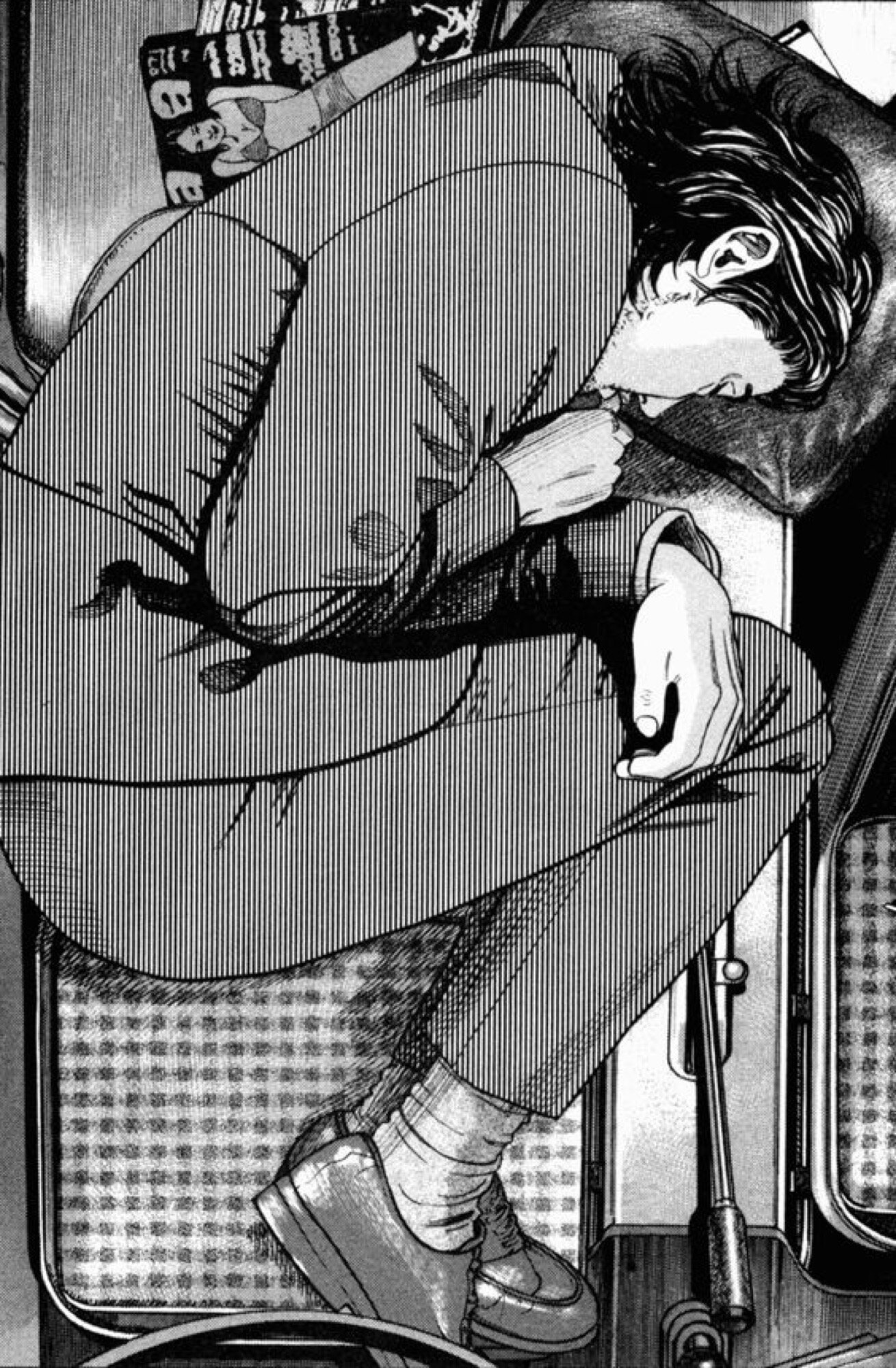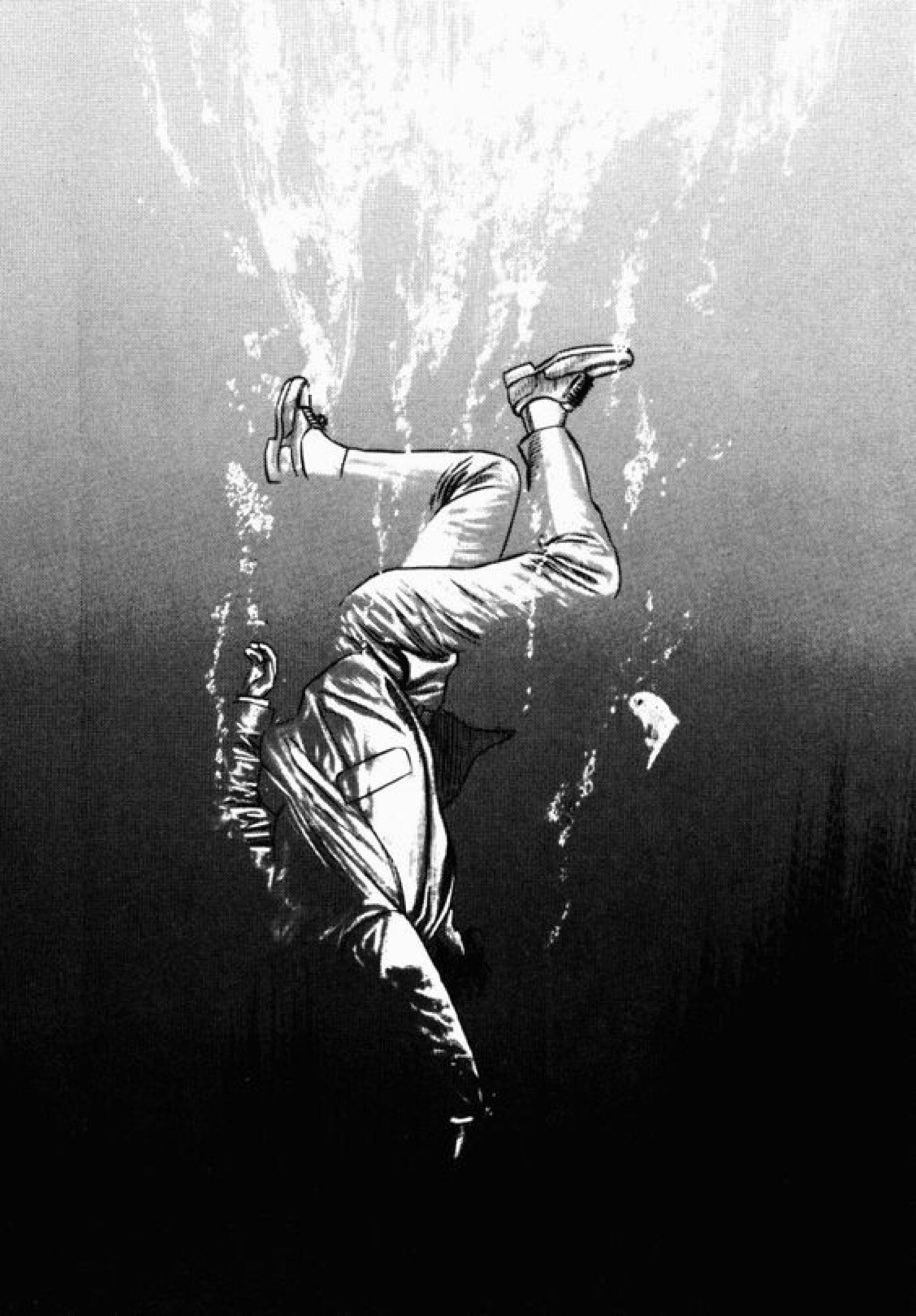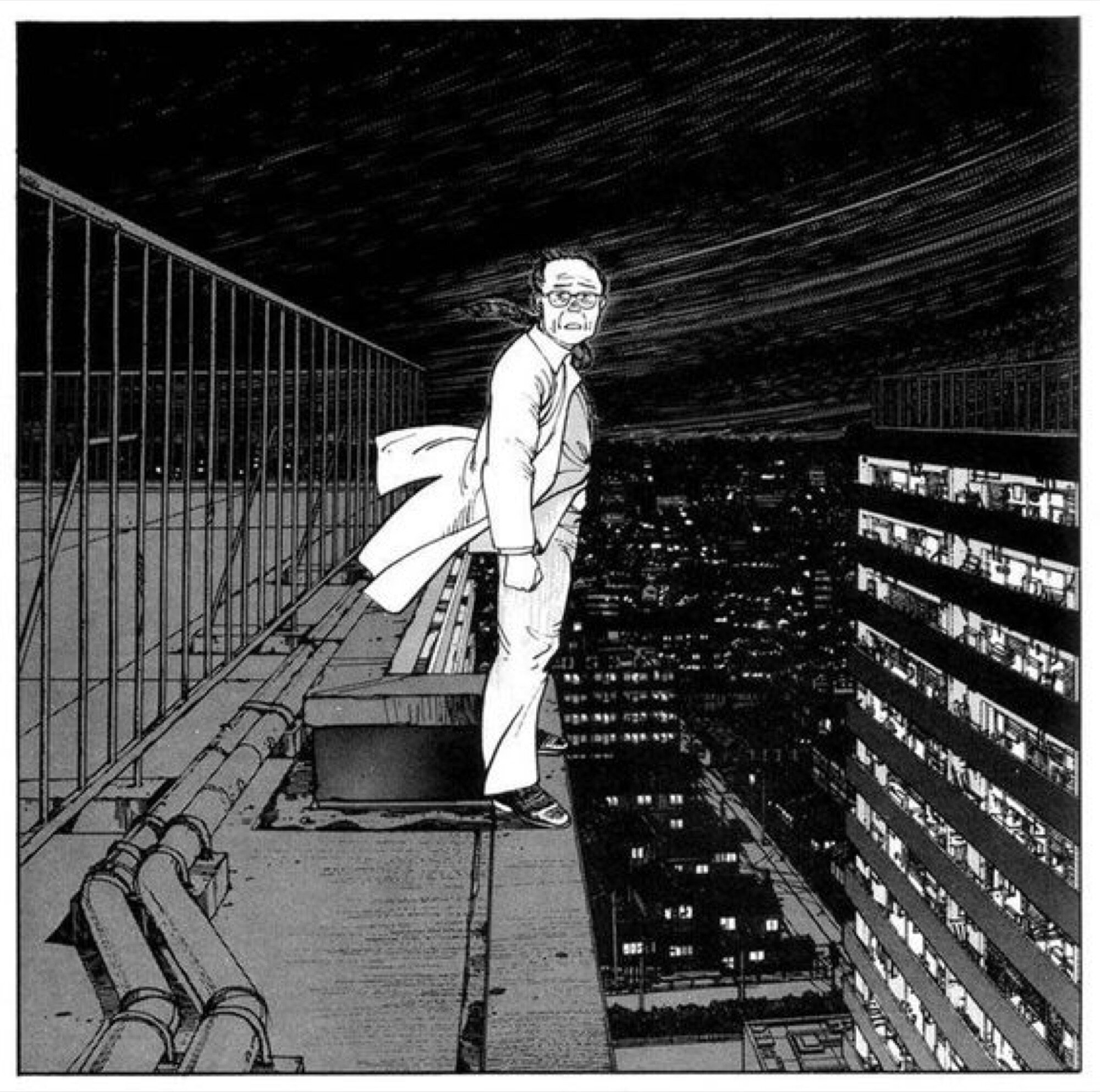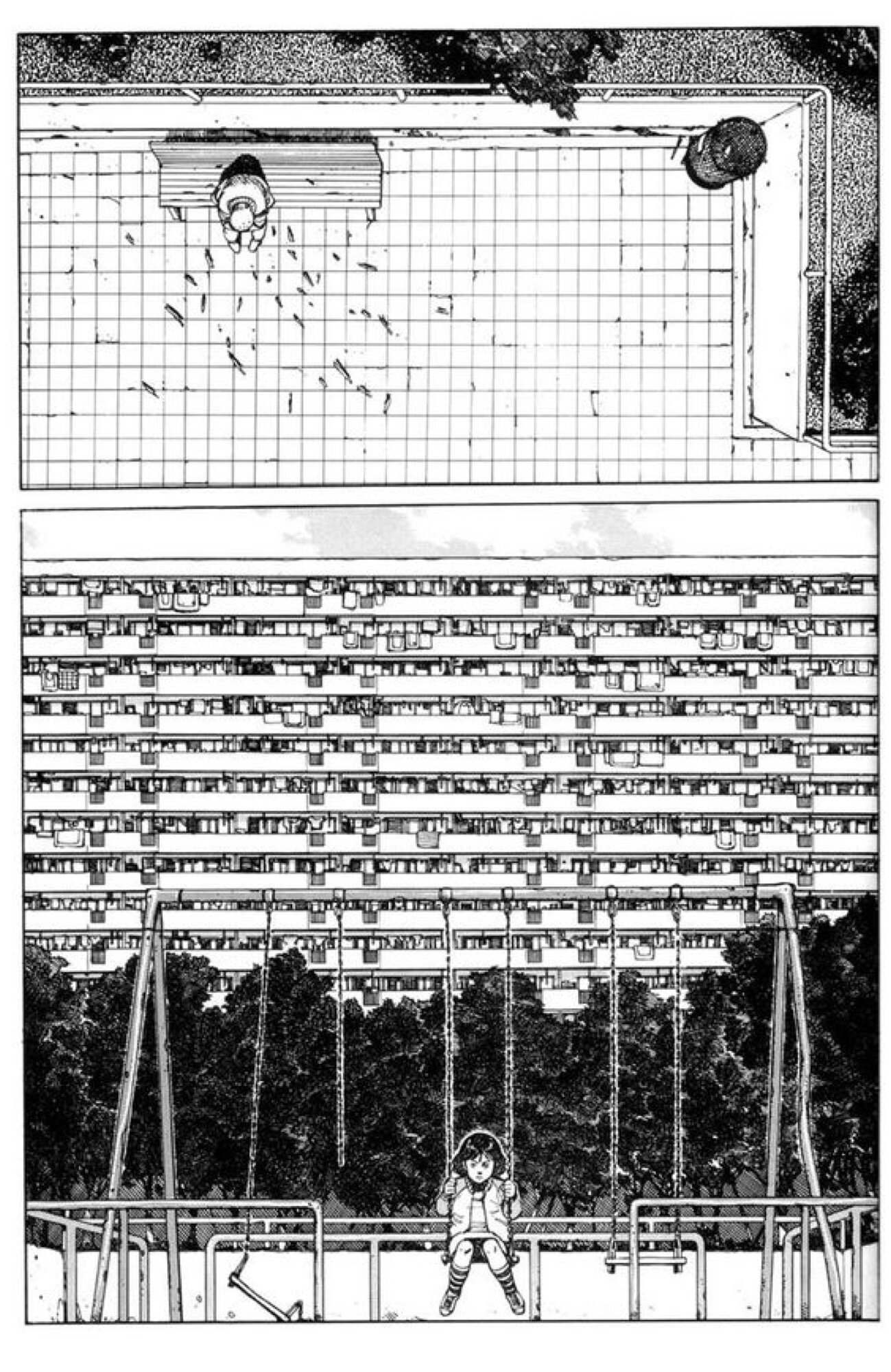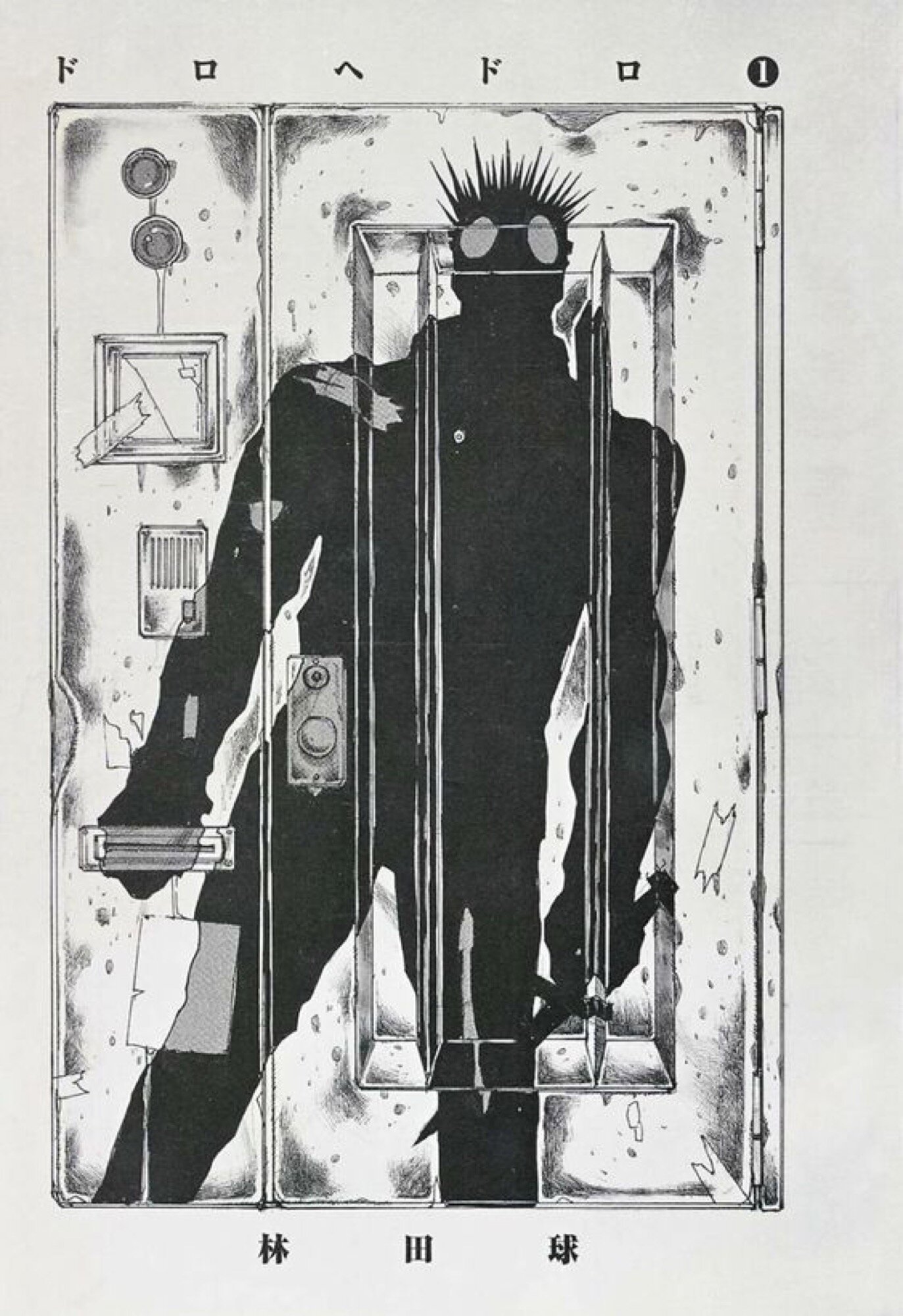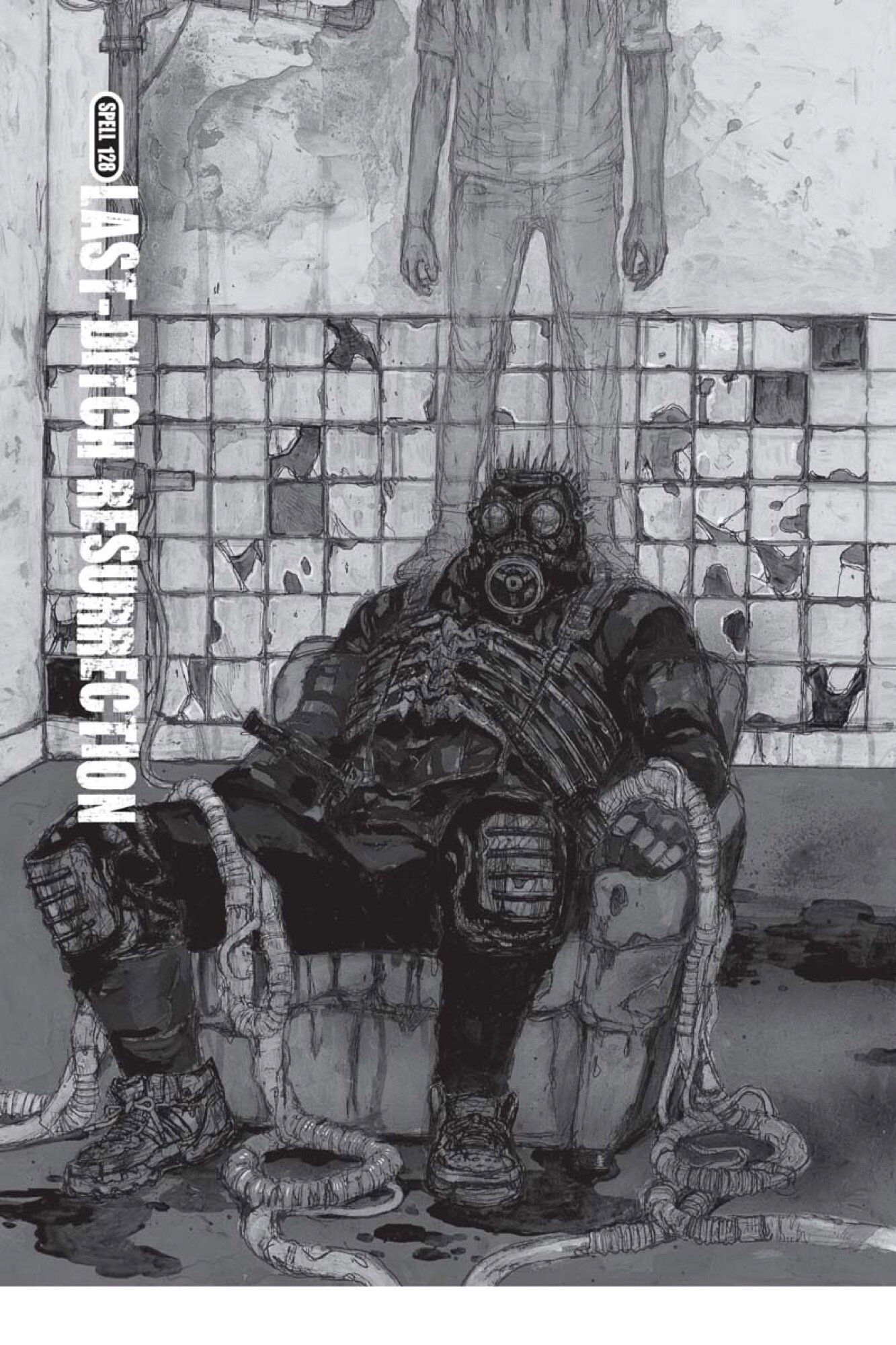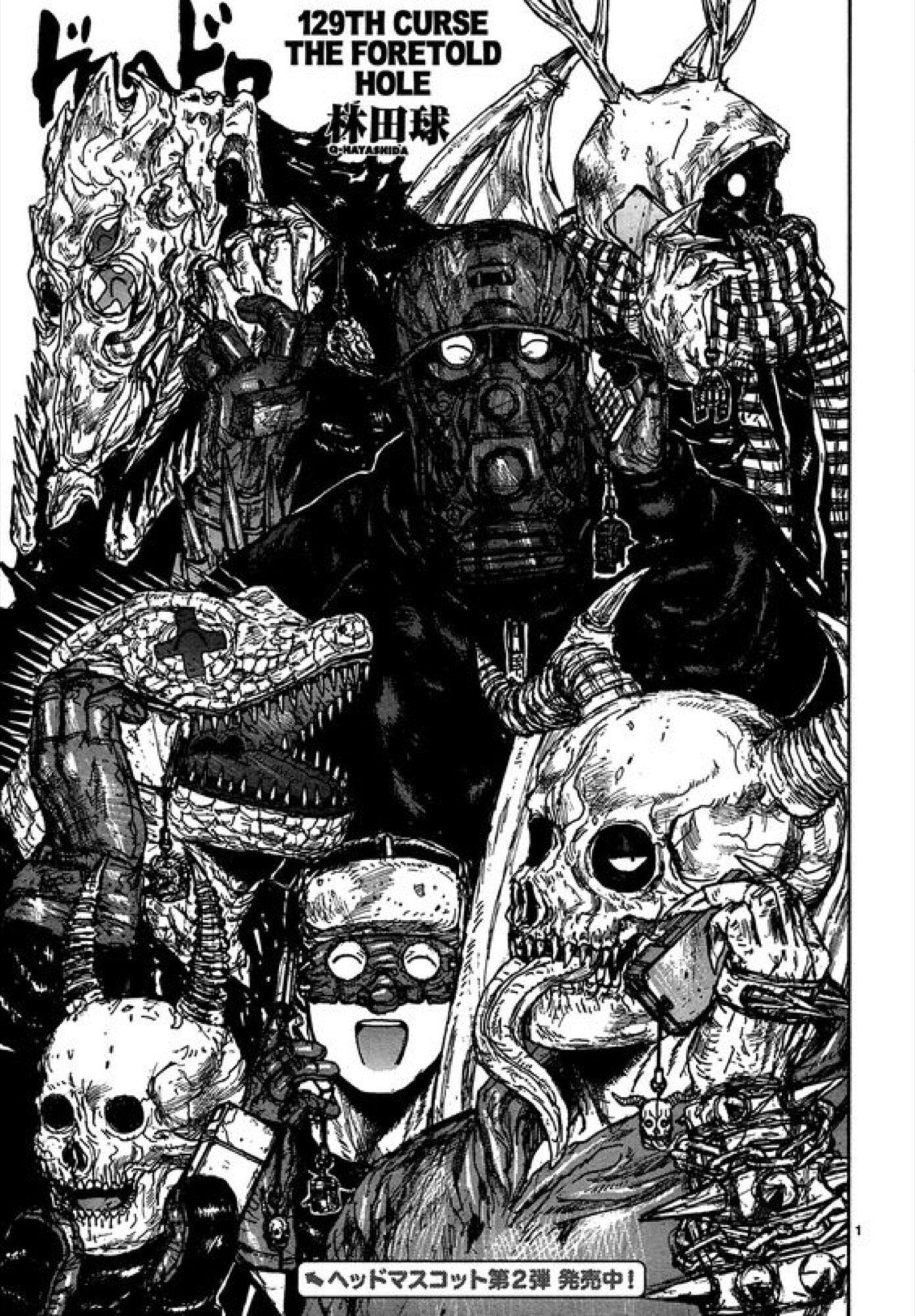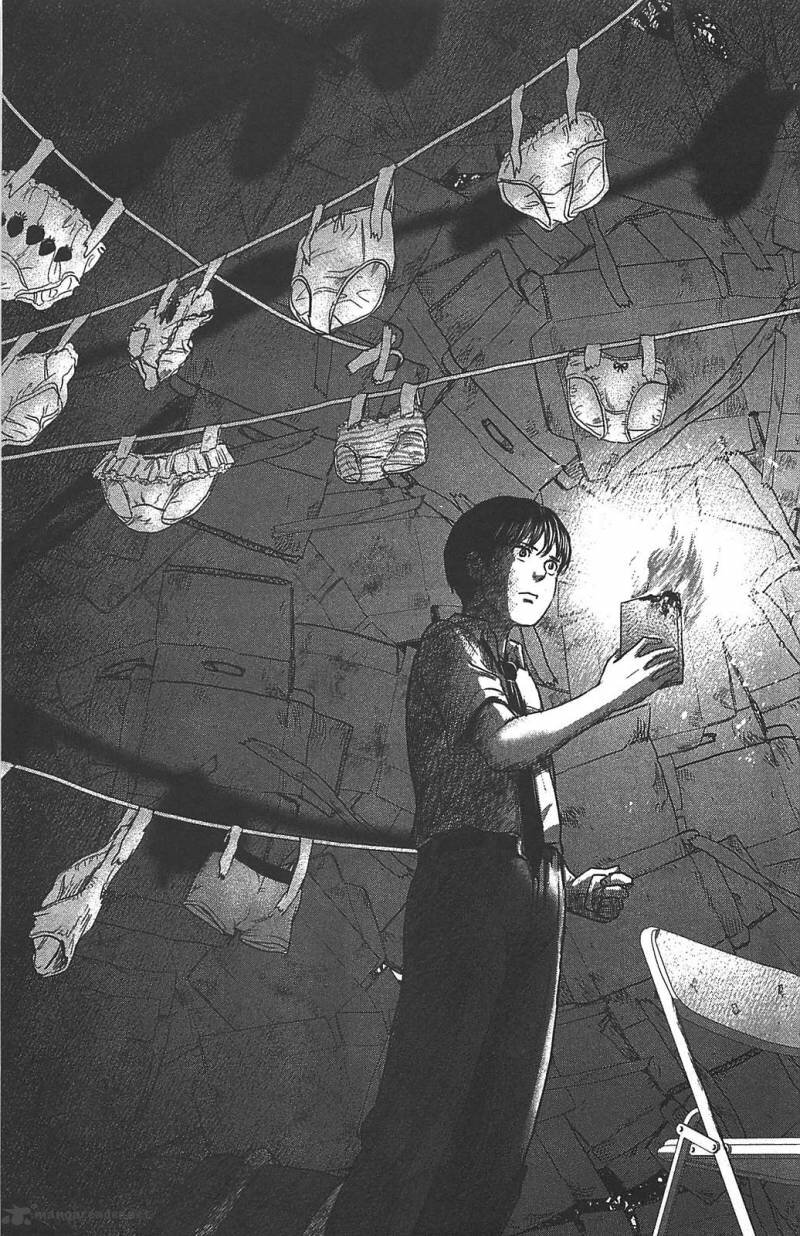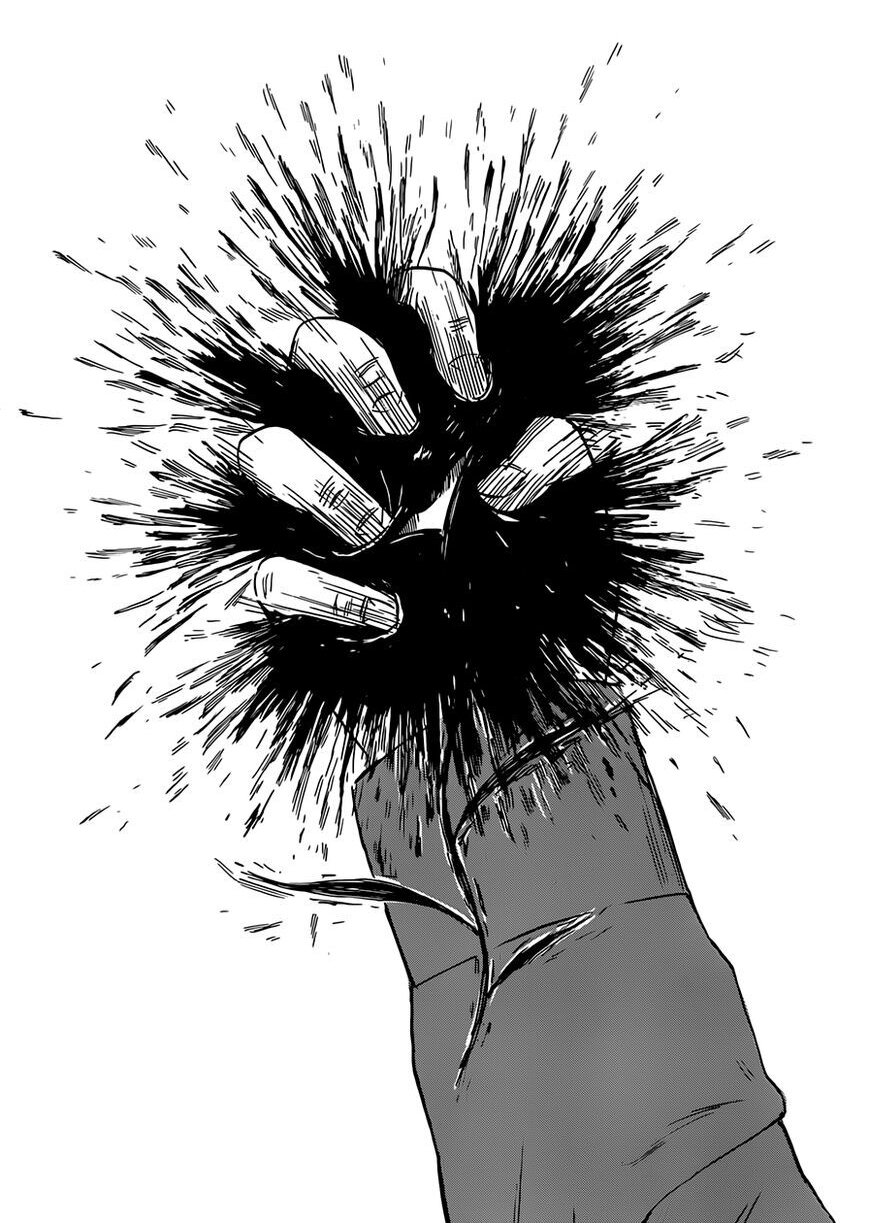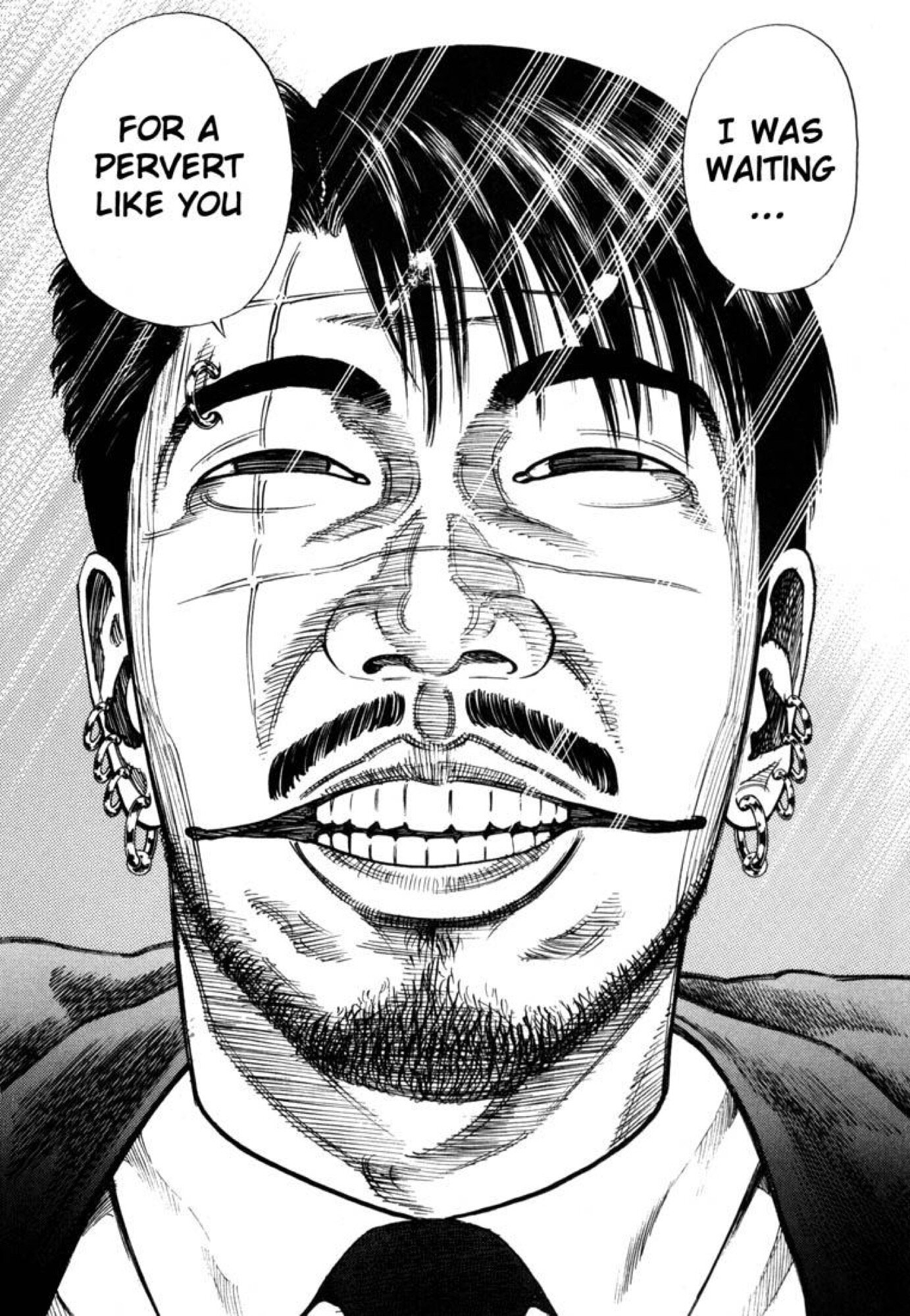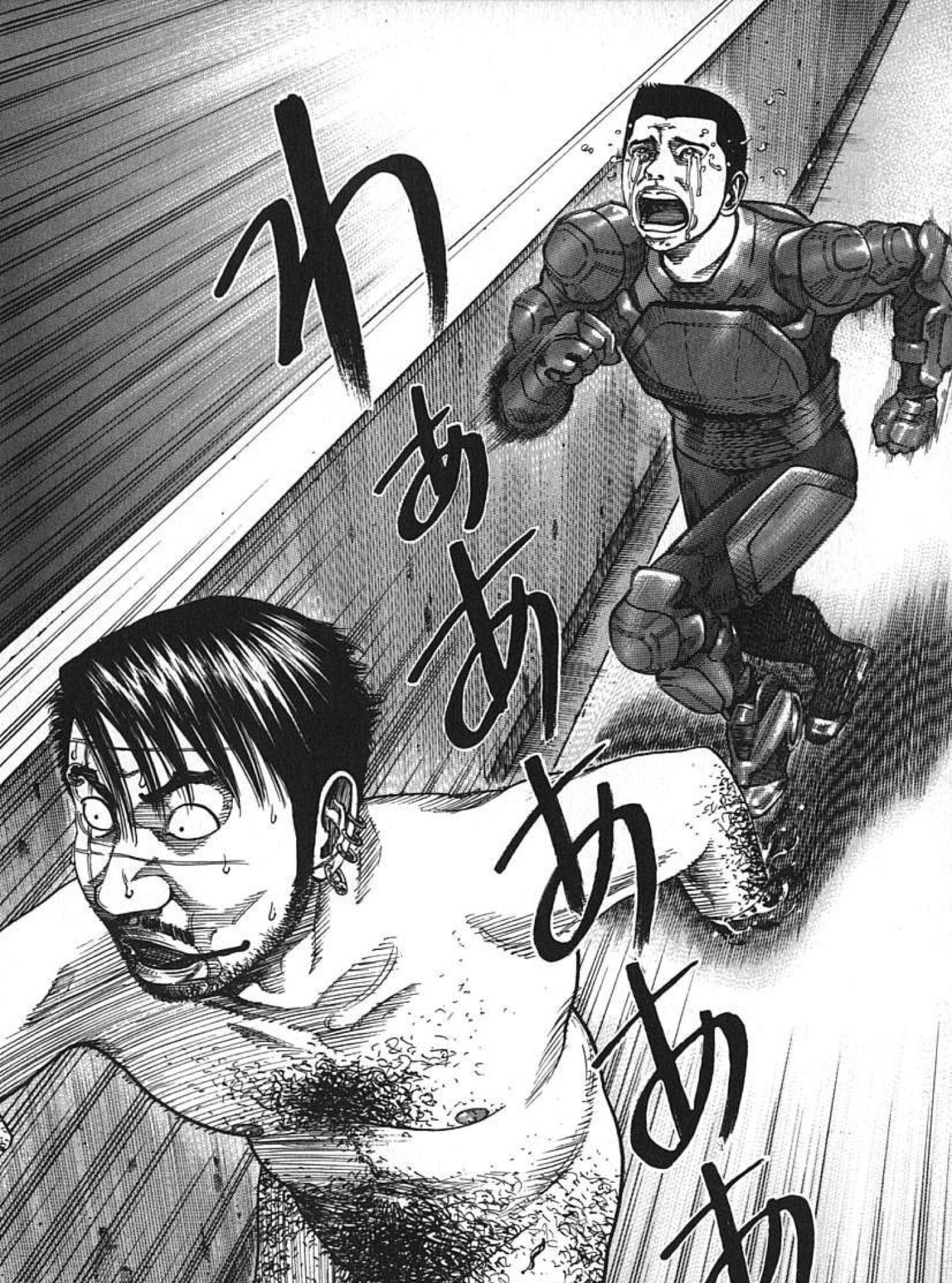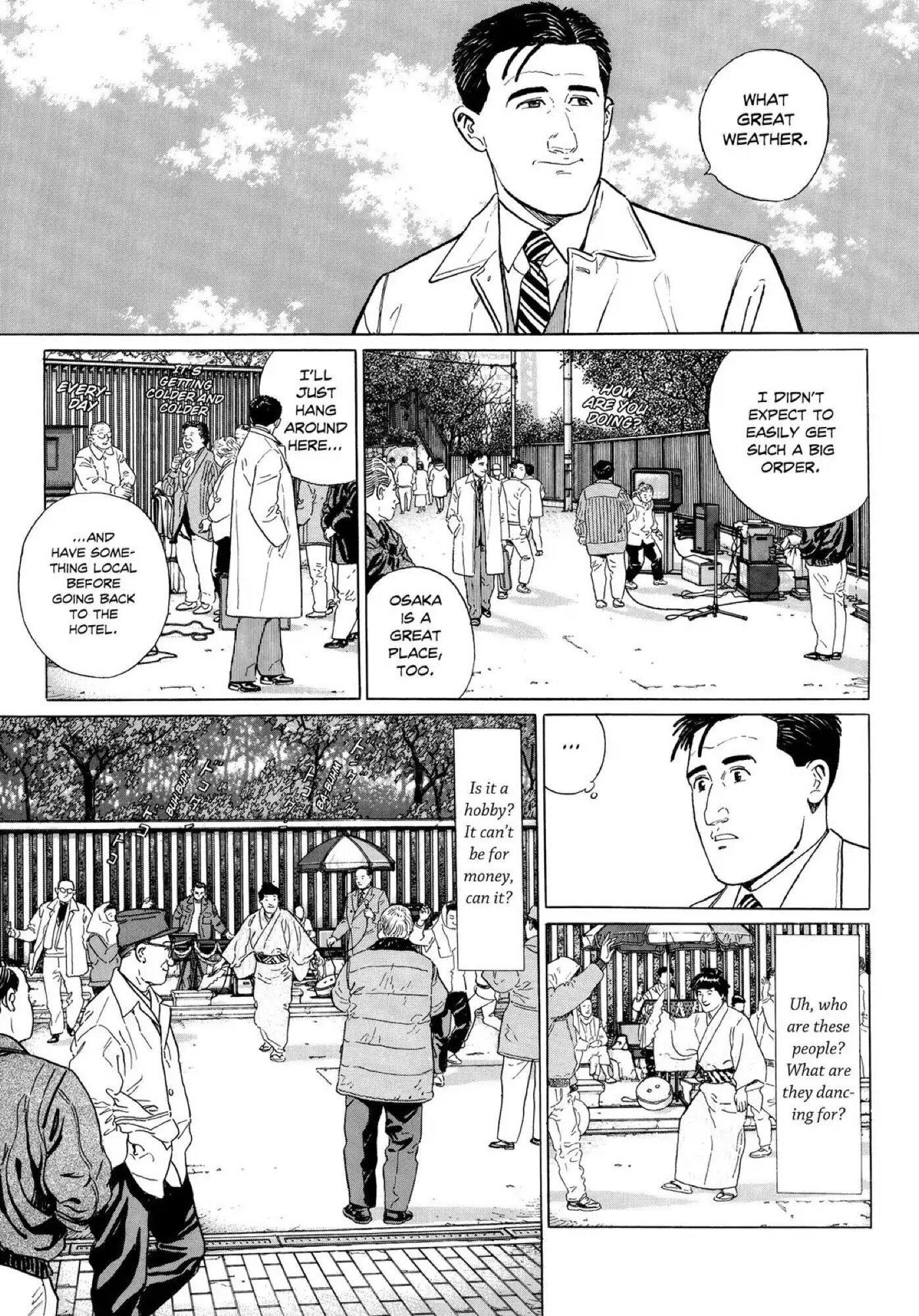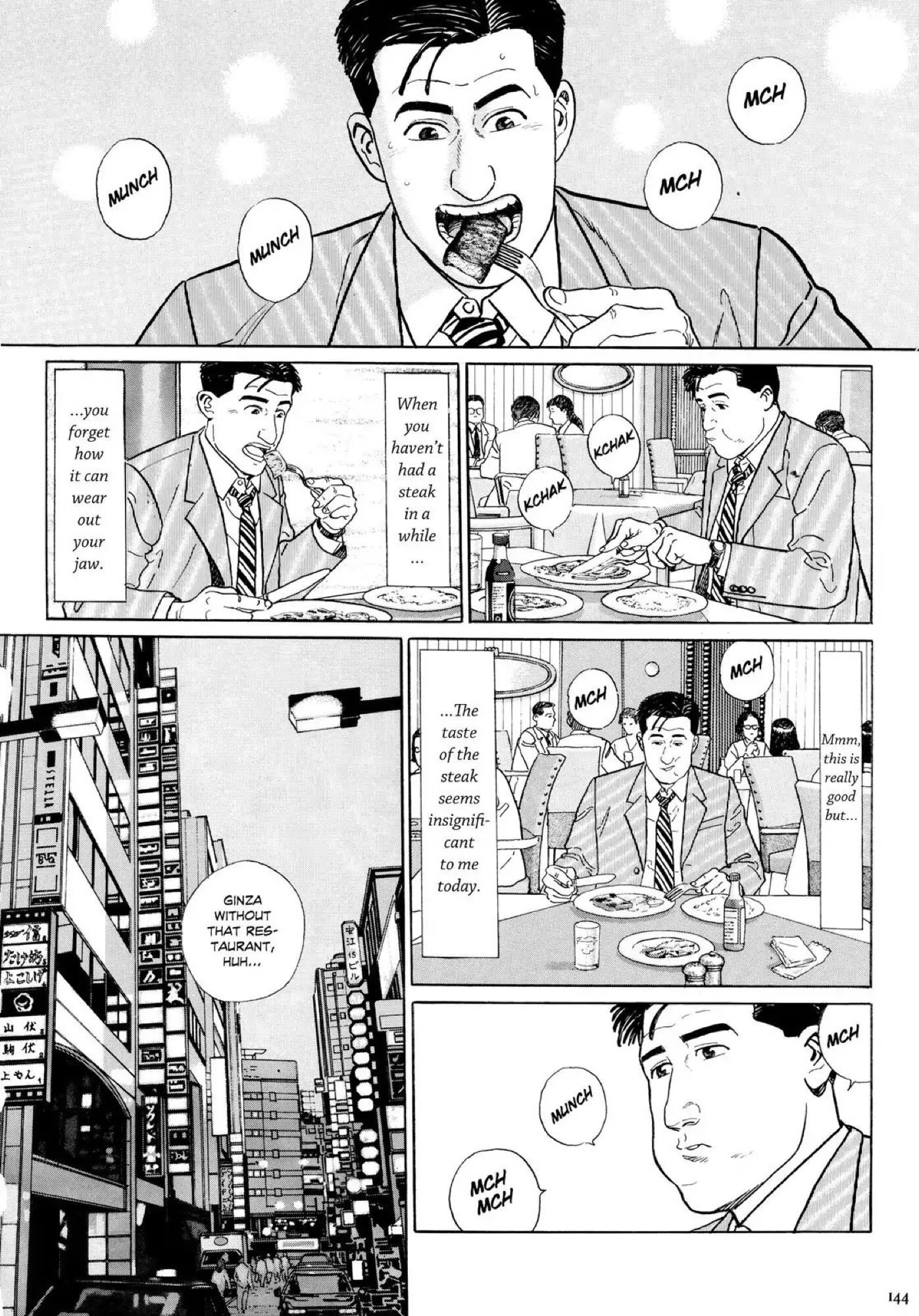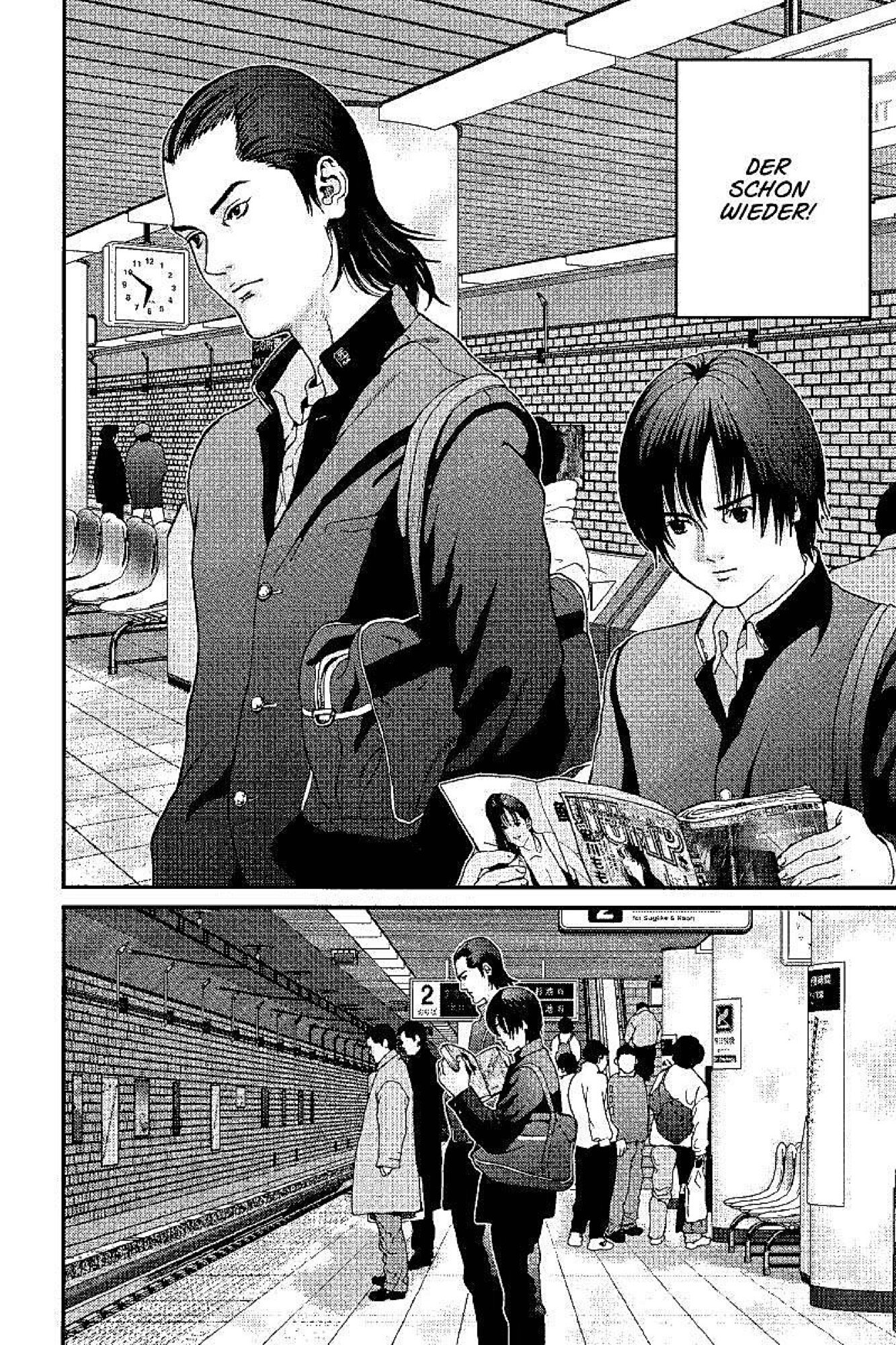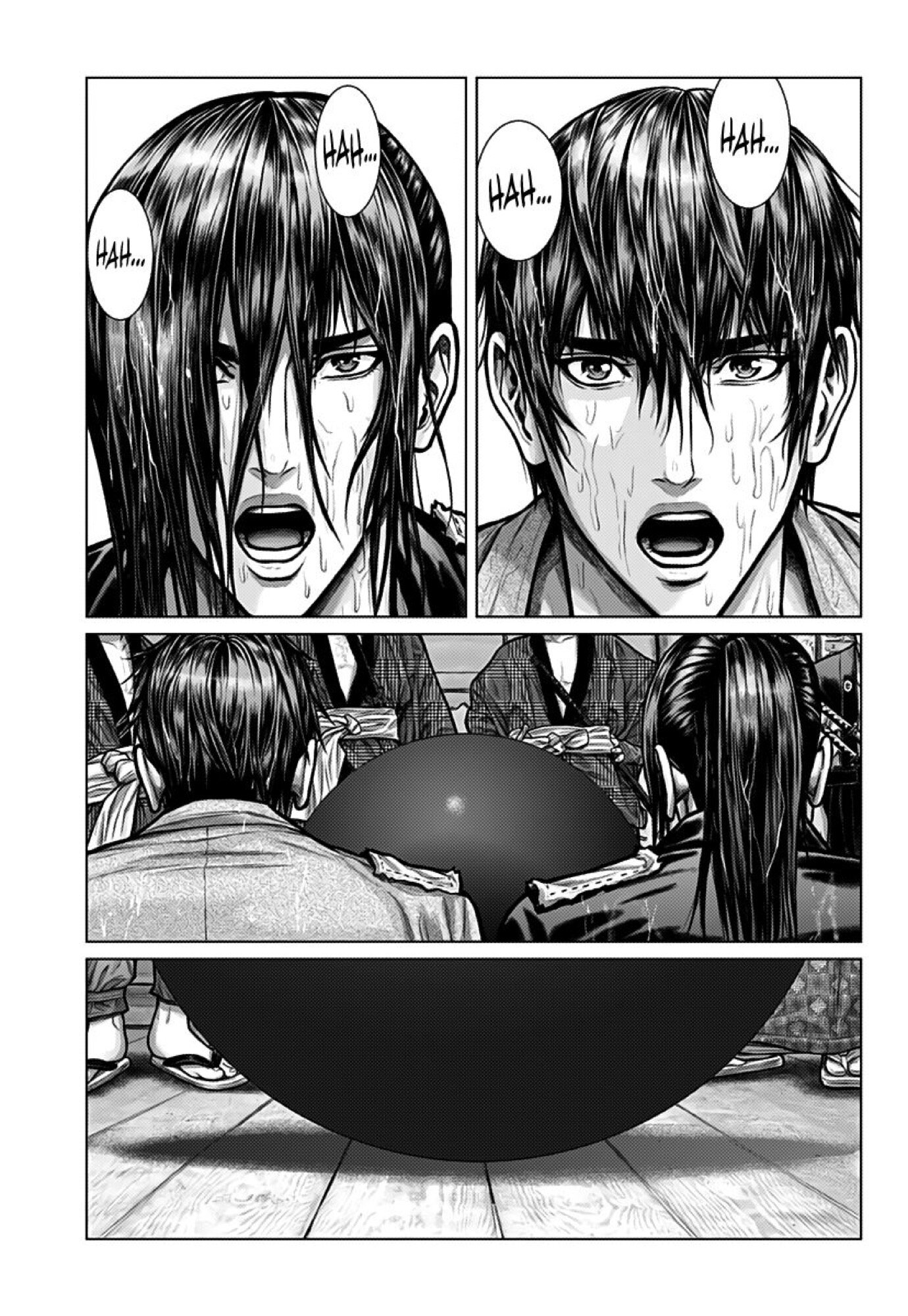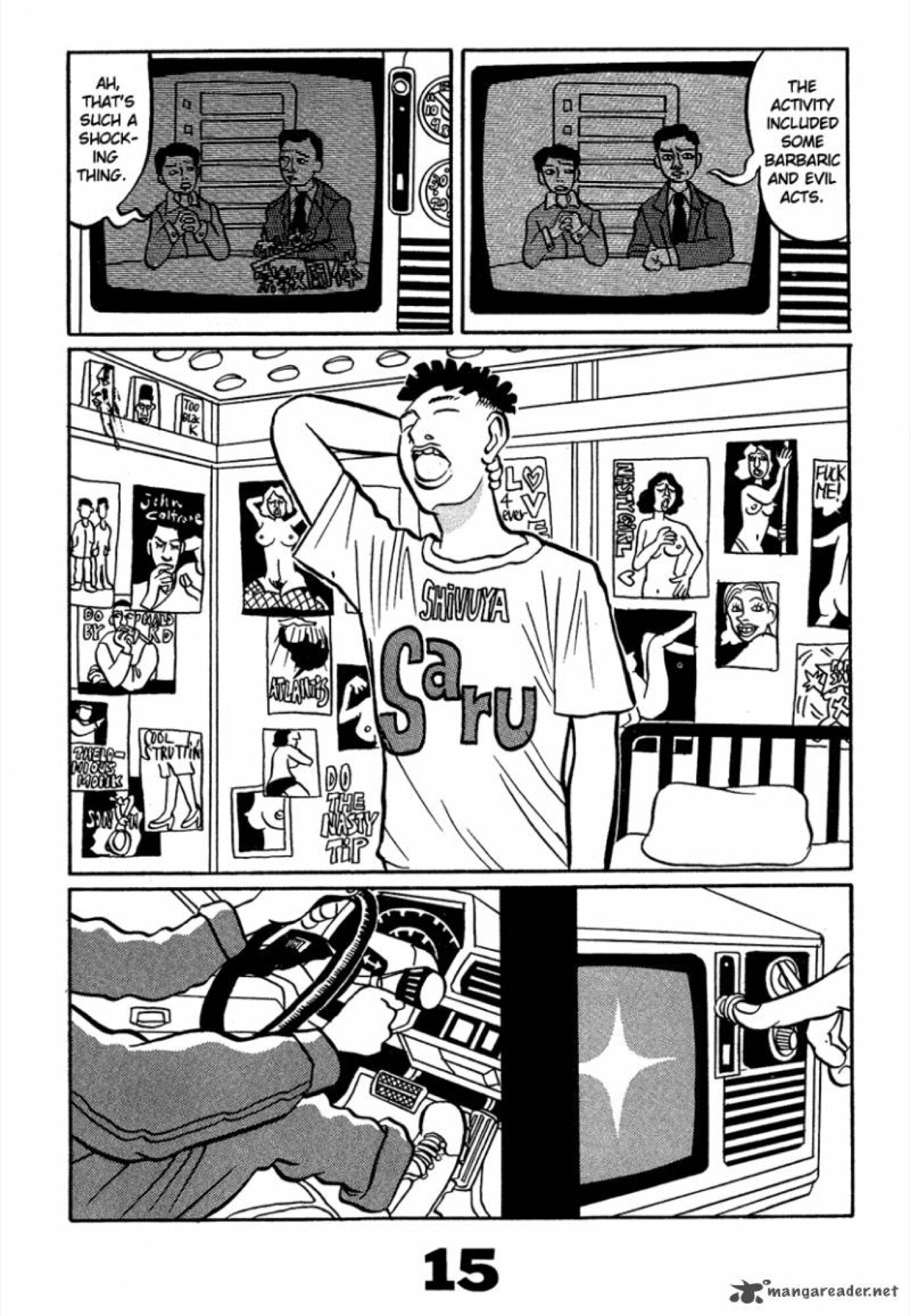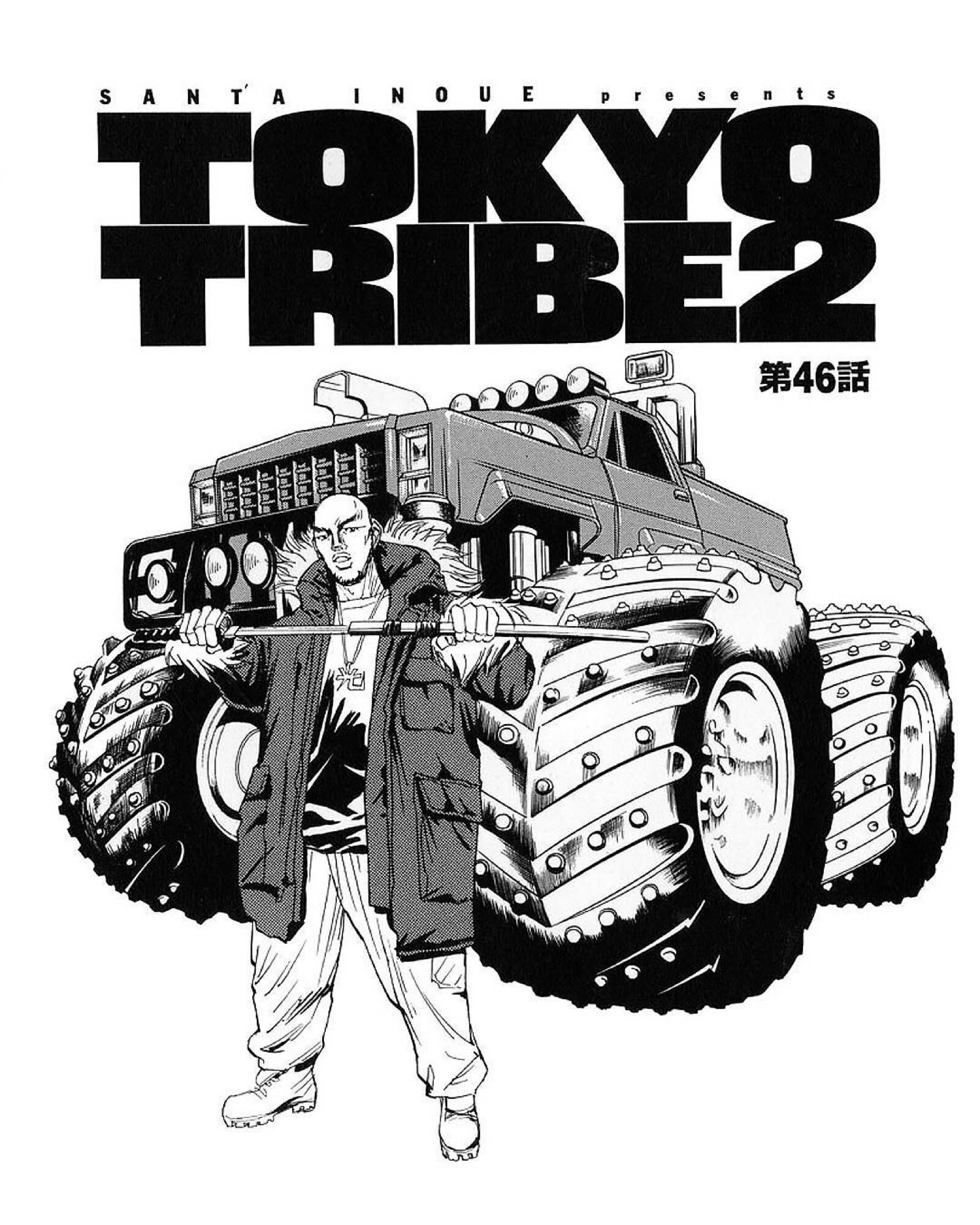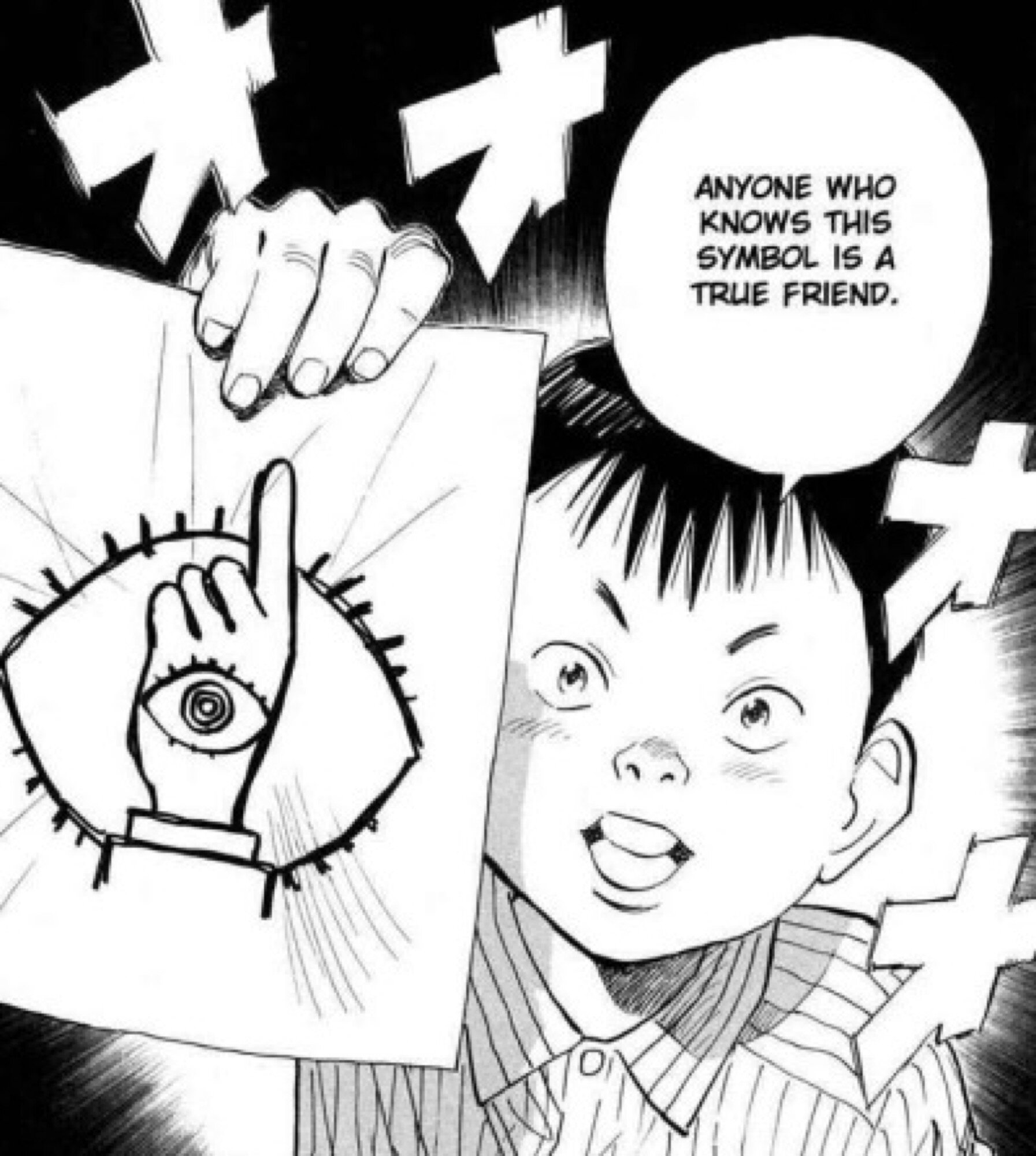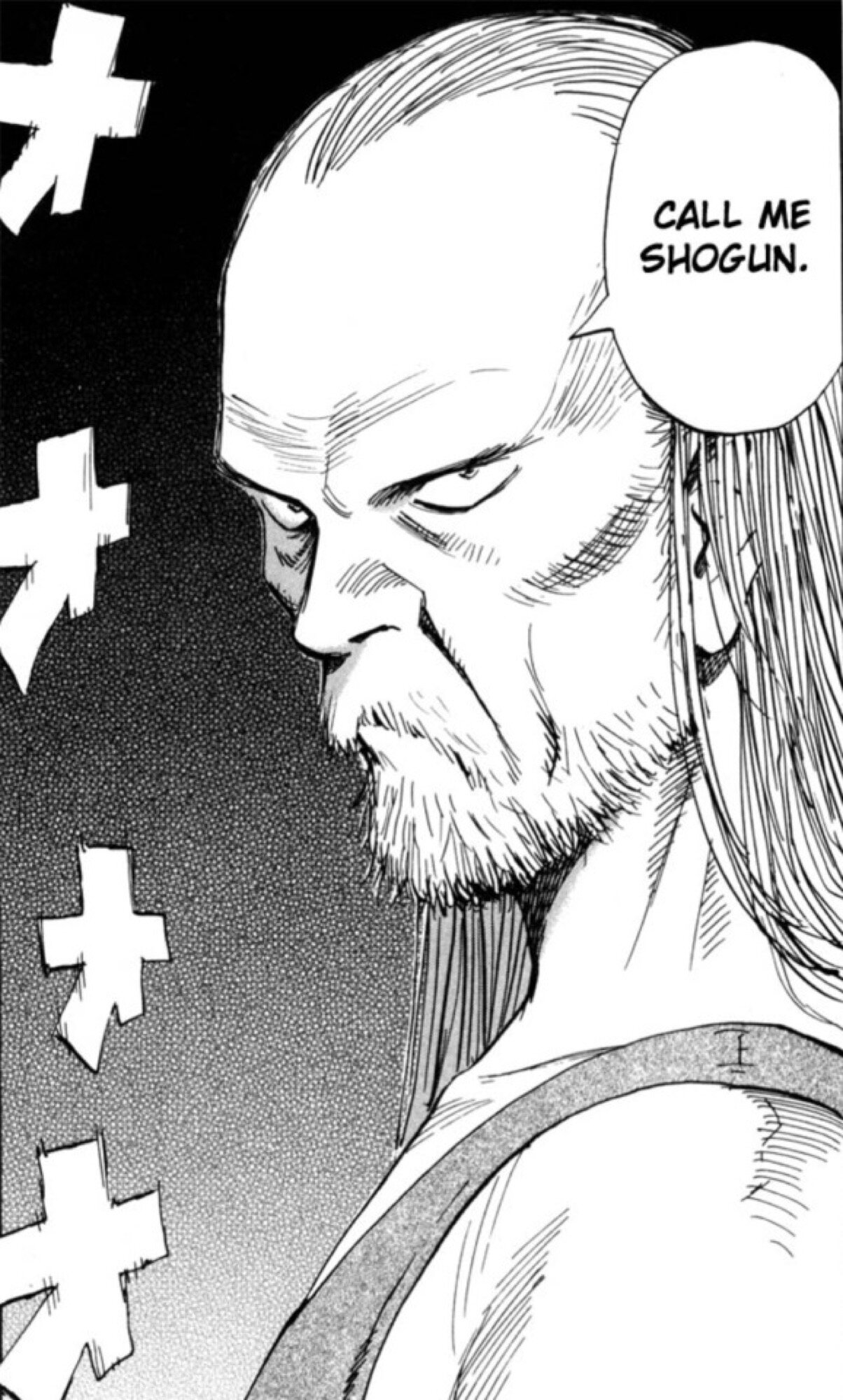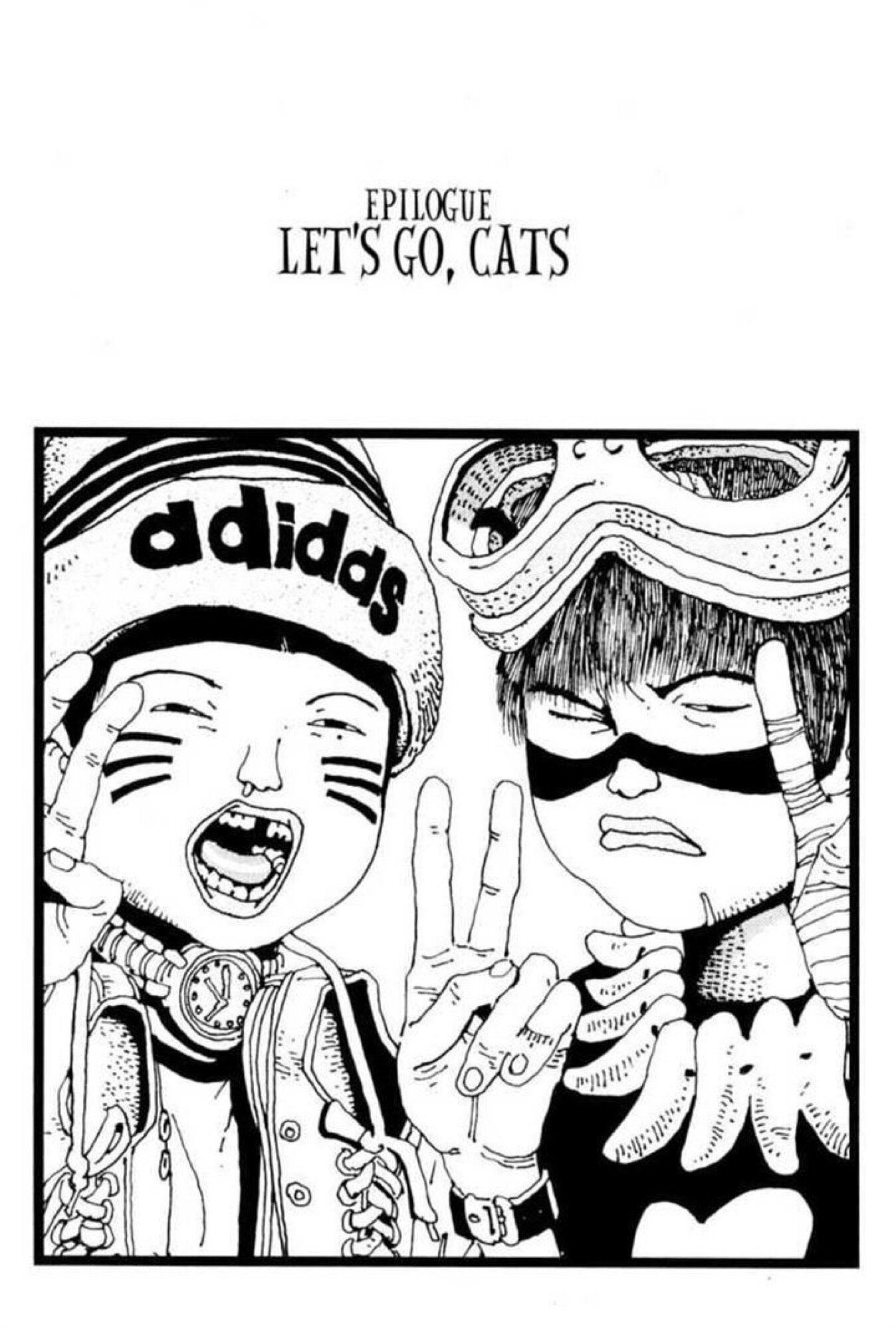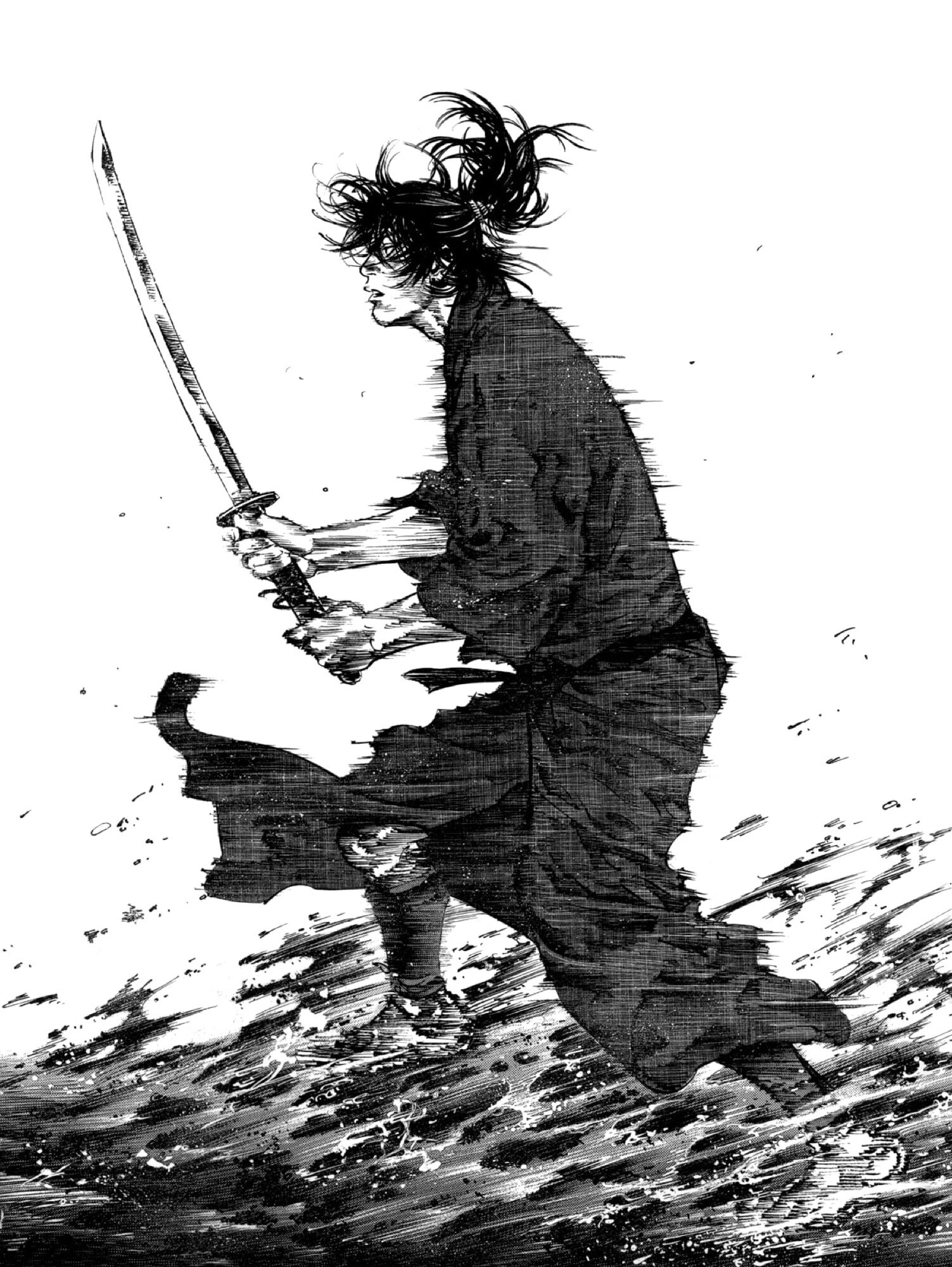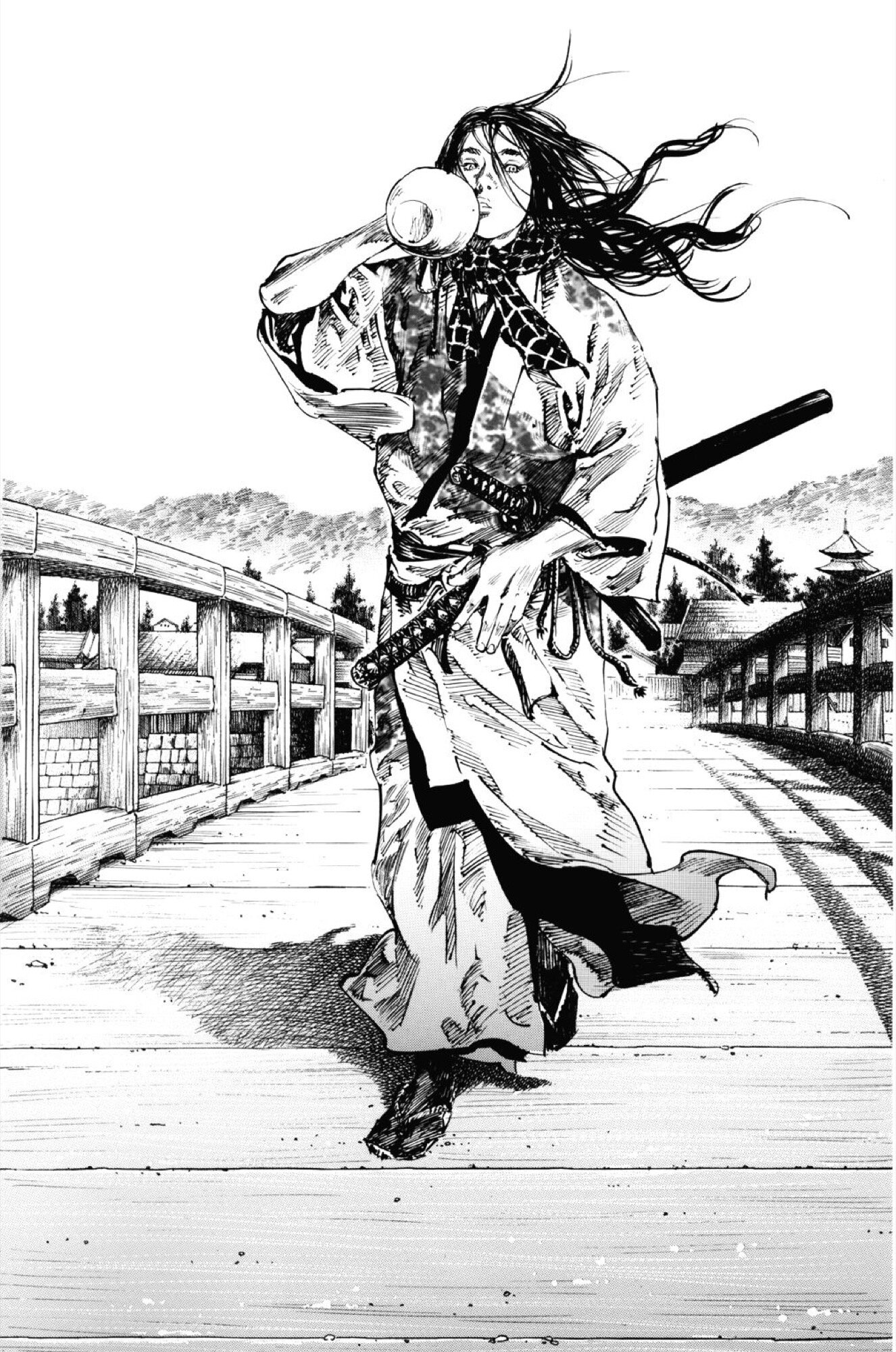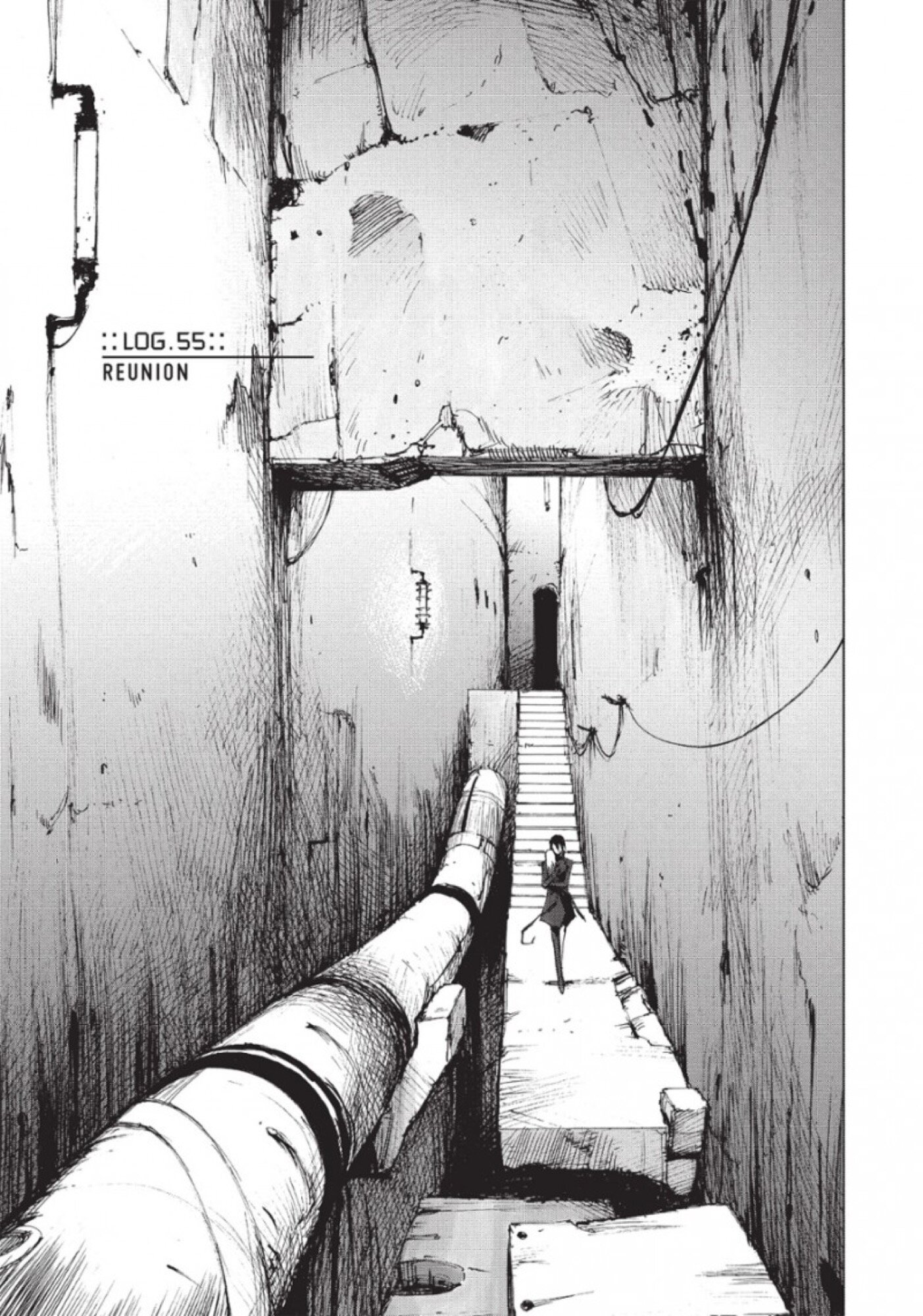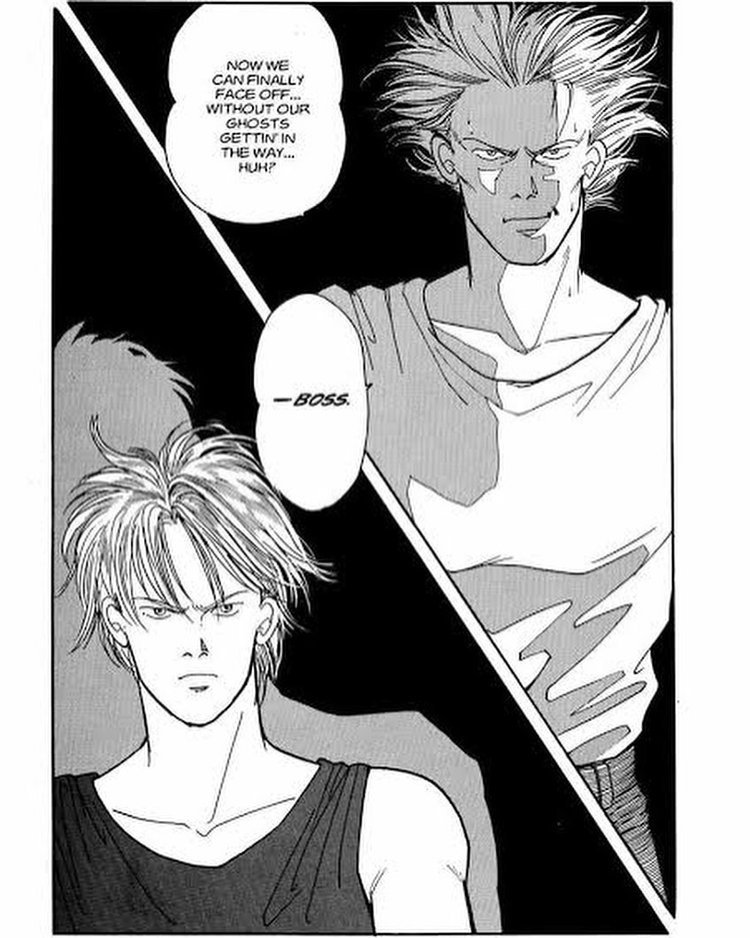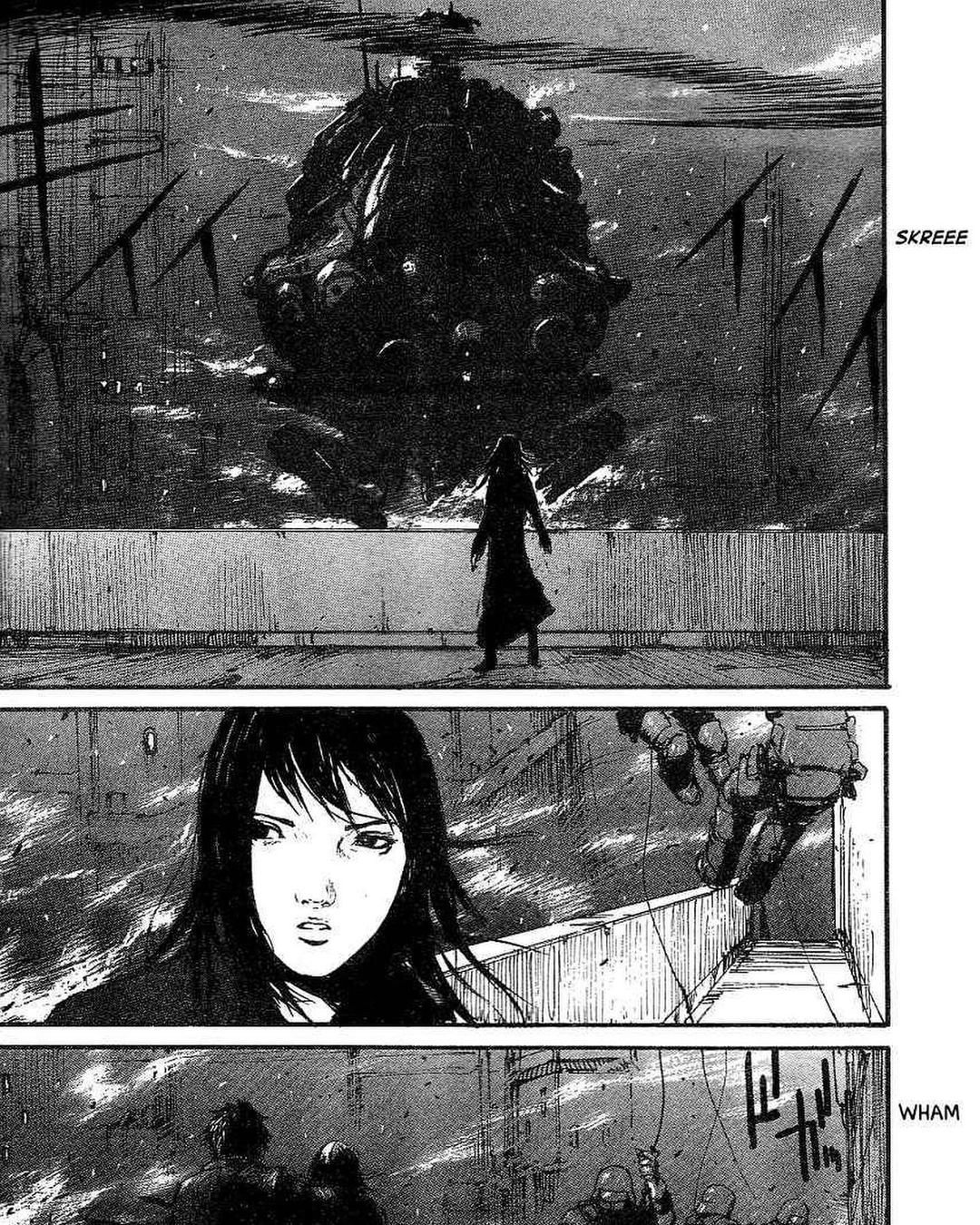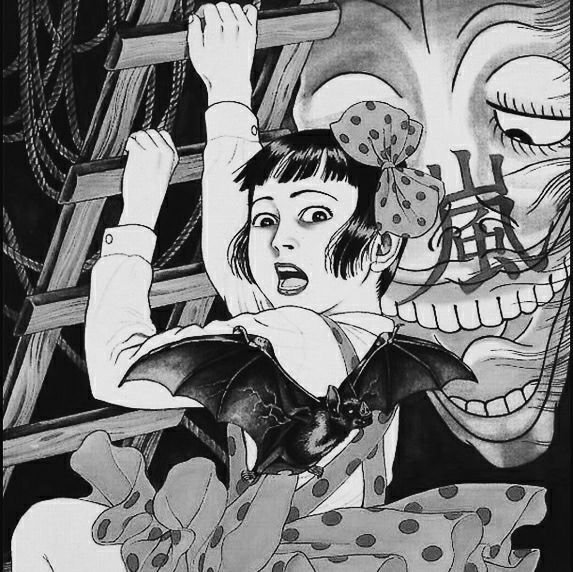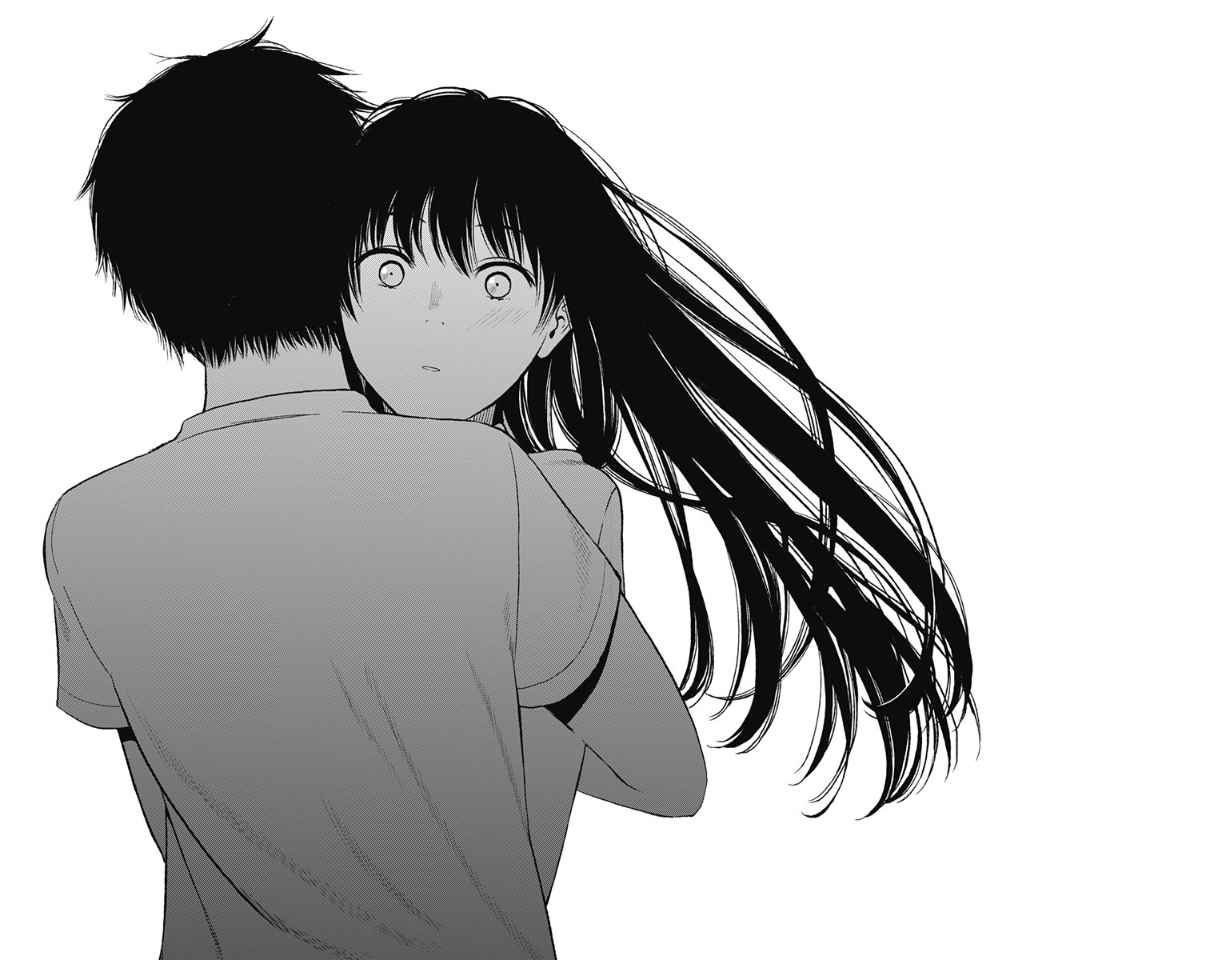THE ULTIMATE SABUKARU GUIDE TO MANGA

sabukaru online presents the ultimate guide to manga, and when we say ultimate, we don’t mean it lightly.
sabukaru has covered over 100 mangas since its first day online. On this side of the Internet, we have become a hub for premium recommendations for all kinds of mangas - naturally, as they rule our platform as one of our favorite topics.
But this guide is like no other: it covers all of our mangas ever posted. On top of that, it will continuously update with each new manga we recommend, as a means to create an infinite library of the selection of the greatest mangas available.
Not only will it have some of the most golden classics of manga, but some completely unknown gems, and our favorite underrated picks. The art, storyline, and characters are top-notch in every standard, and the range of this guide will baffle you.
It goes beyond simple recommendations, as we crack down the manga analytically, without ever spoiling the storyline. From total gore and body horror to fruit-punch sweet slice-of-life stories, from entrancing series to lingering one-shots, this sabukaru guide powers through all the mangas you’ve missed out on.
Dive deep into sabukaru online’s all-time manga stars: your next favorite is certain to be there.
THe ULTIMATE SABUKARU GUIDE TO MANGA
HOMUNULUS by Hideo Yamamoto
Hideo Yamamoto’s manga Homunculus tells the story of Susumu Nakoshi, an ex-business man who lives a rather miserable life with his car as his only home. One day he meets the strange-looking medical student Manabu.
This is a key turning-point in Susumu’s life. Manabu offers to perform a trepanation on him.
Trepanation is the medical act of drilling a hole in the skull. It is said to increase blood circulation and improve pressure inside the skull. It is also said to bring out a person's sixth sense.
After the surgery, Susumu finds himself awaking with a unique and haunting talent of being able to see the deepest fears and most secretive sides of a person’s character.
A highly psychedelic and one of a kind story that mixes horror with dark humor.
DOMU by Otomo Katsuhiro
Katsuhiro Otomo is very well known for his manga "Akira" but we want to focus on another of his lesser known works.
"Dōmu" is the fifth manga by Otomo-sensei which was released and finished before he started making Akira. Dōmu’s setting is based on the neighbourhood Otomo used to live in during the 80s. The story recalls daily life in a typical Japanese housing complex.
In this calm and ordinary neighbourhood something abnormal is hiding. The plot focuses on the police who try to solve a mysterious death. Furthermore, we follow a little girl who battles the suspect with her supernatural powers. The story will shake you to the core, and the sixth chapter of the manga will surely leave anybody stunned and longing for more.
A high number of suicides occurred in Japan during the 80s and this sad fact was used as the main inspiration for Otomo while writing and drawing Dōmu. Though he obviously added his signature spice, made up of supernatural and action-packed elements, Otomo’s style of making manga was seen as slightly unusual though visionary at the same time. One can say that this is clearly one of his lesser-known masterpieces.
dorohedoro by q hayashida
Two worlds that coexist. The Hole - A dystopian cityscape that is home to mortal humans. The Sorcerer’s World - Home to the mysterious and powerful sorcerers. Two species that coexist in a constant fight against each other.
Caiman awakes. His mind is blank. All memories lost. He is human but awakes to the fact that his head was transformed into that of a reptile. An unknown sorcerer caused Caiman’s fate to turn this sour. He begins his path to find the one responsible for this crime and his path will be bathed in blood and guts.
Dorohedoro is an exceptional example of the ambivalence of manga and offers a wide variety of topics.
Q Hayashida is the mastermind behind this manga and one of the few female mangakas in the business. The world and story she creates in Dorohedoro is deeply dark, utopian, and brutal. The characters are vividly portrayed. There is a balance of humor, violence and an extra secret essence that makes you identify and relate to the characters, although they all look rather scary and dangerous.
The world Q creates might be utopian but each life and story in there seems to have its justified place in the plot and never seems unnecessary. Her character design is exceptional and her pop references with adding iconic Nike silhouettes to the mix are fresh and iconic. Dorohedoro is a masterpiece.
the flowers of evil by Shūzō Oshimi
The Flowers of Evil by Shūzō Oshimi tells the story of Takao Kasuga who finds himself in a twisted and dark situation after he gets blackmailed by Sawa Nakamura.
This manga offers an exceptional piece of storytelling, a story and character play that goes deep into the human mind and psychological conflicts and excess.
A story that is unique and detailed and completely detached from the medium it is told by, Oshimi’s tells a story that is so vivid and complex that it could easily function as a plot for a novel or movie saga but in the case of The Flowers of Evil this story is told through Manga.
BERSERK By Kentaro Miura
This medieval-fantasy masterpiece by Kentaro Miura is a definite “no-bull-shit” type of manga. Violence and the harshness of life are portrayed in a nearly Tarantino-esque way. The brutality is explicit and over-the-top without being tacky.
Throughout Berserk we follow Guts, a mercenary, who quickly grows up to be a brutal and powerful warrior. Famous for his strength and gigantic two-handed sword he roams the land on his quest to find and fight his dark fate and to kill evil demons.
One finds oneself being fascinated with the creativity and vividness behind each character and Guts struggle to find the true meaning of his existence versus the little humanity that is left in his dark soul.
Berserk is a truly brutal manga that creates a one of a kind melancholic setting and world that is properly action and violence-packed without being trashy at all.
But no matter how dark it gets, Guts always wields a 2 meters broadsword. 2 meters. That is truly berserk!
UZUMAKI BY JUNJI ITO
The word Uzumaki (うずまき) literally means Spiral in Japanese. This sets the vibe for the entire story of this true horror masterpiece by Junji Ito.
In a fictional rural town in the Japanese heartland things being to spiral out of control (pun intended).
The manga won several awards and is just one of many of Ito’s horror works. The style helps to underline the fascinating horror and often even shows similarities to the narrative of traditional Japanese artwork called Ukiyo-e.
ICHI THE KILLER By Hideo Yamamoto
Hideo Yamamoto’s cult classic manga is a fever dream of blood, violence and over dramatic facial expressions.
A young mentally unstable man called Ichi is being used as a tool by Jii-San aka “The Old Geezer” to kill off members of the Anjougumi Clan, a strong yakuza crime family.
Ichi often behaves like a child and shows signs of mental and physical disturbances. This changes drastically once he puts on his tight leather bodysuit which features armor plating and steel razors that protrude from his heels.
Ichi is soon being hunted by the new head of the Anjougumi Clan called Kakihara. We quickly learn Kakihara’s over-the-top Masochist tendencies and love for pain inflicted on his own body.
A manga full of maniacs slicing and dicing each other into little pieces. Beautiful.
A Japanese film adaptation by Takashi Miike in 2001 reached controversy for being overly violent but quickly regained fame as a cult classic.
SOLITARY GOURMET By Jiro Taniguchi
A compilation of short stories by Jiro Taniguchi based around the daily life of a traveling salesman named Goro. Nearly every story starts with him miraculously forgetting to bring food to work and then having to go and eat in a restaurant in whatever region he’s currently in.
There is no climax or suspense. No action packed storytelling. It simply shows the culinary diversity of Japanese cuisine. Even the native Goro often stumbles upon dishes and food styles he has never seen nor tasted.
Even though Taniguchi is only equipped with his black ink and manga-halftone, he manages to portray the food in such a tasty way. Reading this manga is truly relaxing and gives the reader a good (and hungry) feeling.
BATTLE ANGEL ALITA By Yukito Kishiro
Somewhere in the distant future. Scrapyard, a town filled with poverty, rust and crime. Above its stinking piles of toxic waste you can see the great flying city of Zalem. A utopia of chrome and stainless steel. We dive back into the dirty and disease-ridden streets of Scrapyard. Ido, a local bounty-hunter and cyber medic finds the half-destroyed torso and head of a beautiful cyborg, Alita.
Battle Angel Alita or GANMU as it’s called in Japan currently consist of three phases. The classic volumes that started in 1993 concentrate on Alita’s struggle to first pieces of her past in Scrapyard. The following Battle Angel Alita: Last Order takes us up to the mysterious flying city of Zalem. The latest Battle Angel Alita: Mars Chronicles (which is still running) takes us back to Alita’s childhood in order to shed some light on her mysterious past.
This manga by Yukito Kishiro is a true masterpiece when it comes to storytelling, artistic style, action and character development. Everything about it feels like we’re just scratching the surface of a very complex world. A manga that makes us dream of cybernetic warfare, robo-races through the rusty streets of a dystopian slum and deadly cyborg-to-cyborg combat.
Enjoy the world of Battle Angel Alita and please never ever watch the American live-action film adaptation. It’s an insult to the eyes and should be erased from the human hive-mind.
GANTZ By Hiroya Oku
The high school students Kei and Masaru try to rescue a homeless man from an oncoming train. They both die and everything goes dark.
They awake in a white room surrounded by strangers who seem equally puzzled about their whereabouts. In the center of the room floats a black sphere. The GANTZ. The sphere opens and it is revealed that the surrounding people have all died and been transported into a parallel world that resembles Earth. They are all equipped with overpowered items such as a black latex full-body suit that gives the person wearing it maximized strength and higher stamina.
Another part of their equipment is the X-gun, X-shotgun and Y-gun. They are being set out on a mission similar to that of a video game: To kill aliens roaming around in our cities.
Once teleported to an area they have to eliminate every enemy before being able to return back to the mysterious room with the floating sphere.
The diversity and creativity with which the aliens are designed and drawn, is astounding and adds to the fun that comes with reading this manga by Hiroya Oku. His drawing style is quite clean thus giving it even more of a video-game-aesthetic.
TOKYO TRIBE by Santa Inoue
Tokyo. The urban jungle. The city’s youth feels lost and imprisoned in a constant cycle of crime, gang wars, sex and gambling.
Santa Inoue who was born in Paris draws his inspiration from early 80s/90s hip hop music and black culture. Fusing this with Japanese manga culture, he creates Tokyo Tribes as a one of a kind ride into urban Tokyo and the social struggles and troubles.
The characters in his series belong to some of the most vivid and uniquely drawn characters in the world of manga and Santa Inoue shows that correctly referencing can be a strong visual aspect of Manga too. Tokyo tribe is mixing Tarantino with Tokyo, manga with Hip Hop references, youth with growing up in severe conditions. A real unique masterpiece.
20th Century Boys by Urasawa Naoki
What if your wildest imaginations from childhood become reality and went as perfectly as you planned?
This exactly sums up the plot of Urasawa Naoki’s Manga 20th Century Boys. Set in 1969, Kenji and his school gang make a “Book of Prophecy” about the world-famous Expo ’70 (World Exhibition).
But in 1990 suddenly all the events in the book begin to become reality.
A mysterious cult leader called “Friend” enters the plot and everything starts to become even more mysterious, this mystery packed detective-esque manga is a whole bunch of excitement! You can’t put it down once you start reading it.
Tekkonkinkreet by Matsumoto Taiyo
This cult manga reached its popularity after its anime-movie adaptation came out in 2006.
Originally published from 1993-1994 by the author Taiyo Matsumoto, the Manga tells the story of two orphans called Black and White, who run the city and are feared by the locals
They face rather unpleasant problems when a famous Yakuza gang tries to take over their part of the city. Matsumoto’s drawing style is very casual and gives the whole manga a very playful but also cheeky vibe while portraying both violence and day-to-day struggles.
Vagabond by Inoue Takehiko
Do you ever exile yourself for a year in order to master something? That's exactly what Inoue Takehiko did before he started making Vagabond. An amazing manga debuting in 1998, the story portrays the journey of a vagabond called Takezō who challenges every swordsman he meets. He is later known as the legendary Miyamoto Musashi.
Inoue adopts the story from the classic Eiji Yoshikawa's "Musashi" while still keeping it unique and stylish. Inoue-sensei twisted it in a brilliant way and filled it with beautiful slash-and-slice elements along the way.
Sadly after the 37th volume, Inoue stopped releasing and still didn't give any official comment on a comeback. Perhaps he's exiling himself again to depict the epic battle between Miyamoto Musashi and Sasaki Kojiro.
If you’ve never read it before there's a long 37 volumes to catch up with and you should start reading it right now.
BLAME! By Tsutomu Nihei
Pure Darkness. Cybernetic melancholy. Dystopian anxiety. It is this setting in which we follow the story of Killy who is equipped with his over–powered mini pistol called the Gravitational Beam Emitter and fights against humanoid cyborgs called the Silicon Creatures.
The author and artist Tsutomu Nihei captures this setting and story perfectly with his nearly childish and chaotic style of drawing. It is exactly this style of vague and illogical forms that makes the manga all the more fear-inducing and gives us a true feeling of anxiety and horror.
In June of 2017 Japanese retailer EDITION released a collaboration between BLAME! and Berlin based Tech-Wear brand Acronym. The collaboration featured three T-shirts with bold typography and a high quality photo print on the back.
If you happen to already know this manga then you should definitely read Nihei’s other masterpiece called BIOMEGA, both series have an excessive amount of exploding heads in them. Read both!
BANANA FISH by Akimi Yoshida
Let's face it - most of you manga fans reading this right now have probably put a title down simply due to it being a "shōjo manga".
"Shōjo manga", which translates simply to "girl manga", is seen by most people as just that. Manga aimed for girls. While there are many topics and genres that can fall under the shōjo category, there are always common themes that they revolve around like love, relationships, girlhood, and more.
Just like shōnen, shōjo manga had weekly and monthly magazines too. Bessatsu Shōjo Comic was one of these, a monthly magazine that featured several chapters of different manga in each volume similar to Jump or Sunday. One title that was serialized from 1985 to 1994 completely changed how people perceive shōjo manga, being praised by both shōjo and shōnen fans: BANANA FISH.
BANANA FISH, written and illustrated by Akimi Yoshida, is a manga that follows two teenagers Ash Lynx and Eiji Okumura. Ash is a teenage street gang leader in New York well respected by his followers, and Eiji is a Japanese photographer assistant who traveled to capture the reality of street gangs. The two end up becoming friends, and along with their allies, go on an attempt to figure out the mystery of "Banana Fish".
At this point, it might sound like the start of another BL [boys love] manga, but don't jump to conclusions yet. BANANA FISH gets dark, depressing, sad, and makes you feel almost every emotion the average shōjo manga wouldn't. With topics like death, violence, war, rape, politics, BANANA FISH makes you wonder if what you are reading right now was actually serialized in a manga magazine aimed towards young girls.
While there is no direct sexual engagement between Ash and Eiji, BANANA FISH does have some homosexuality, homoeroticism [and not always in a pleasant manner]. This has been credited by some to have influenced the BL genre in later years to come. BANANA FISH has a number of side-stories, and has been made into an animation by MAPPA, who also produced Dorohedoro and Jujutsu Kaisen.
Oyasumi Punpun by Inio Asano
Japanese mangas are read worldwide and increasing in popularity.
One of the reasons for the success of mangas is the variety in genre and in art style. Magazines dedicated to one genre or bookshops that focus on a specific type of manga are equally as coveted. Popular genres are shoujo [targeted for teen girls], psychological thriller and comedy On the other hand, depressing slice-of-life isn’t a very favored subgenre but the manga Oyasumi Punpun [Goodnight Punpun] proves otherwise. In the long list of comic books you’re planning on reading next, Punpun should be at the very top of it.
Written by Inio Asano, the plot, divided into 13 volumes, follows the anti-hero Onodera Punpun and his life throughout childhood into early adulthood, in modern Japan. Growing up in an unstable family, Punpun has big dreams of saving the world, but his life starts to change when he falls in love with his elementary school classmate, Aiko Tanaka. Through the heartbreaks of his life, Punpun often summons a non-religious deity that he calls God to save him, but eventually finds out that it isn’t enough.
At first giving off the impression that this manga is a bizarre comedy of a coming-of-age story, it quickly takes a dark turn. It’s an edgy story, at times disturbing, about the inevitable tragedies that happen in life. It shows us the real consequences that mental illness and trauma have on everyday people. In addition, the character of Punpun is unsettling but also heartwrenching, as he struggles to make the best out of life when it seems like everything around him is going south.
The story of Punpun stands out greatly by its graphics, because the main character and his family members are represented by clumsily drawn birds. Asano wanted the reader to imagine what the Punpun family would look like, inciting them to connect deeper with the characters.
Uneasy, twitchy and slightly nihilistic, Oyasumi Punpun is a difficult but hooking read about depression, loneliness, death, adulthood and family. Asano delivers a crudely realistic view on the ups and downs of life in its most average form and probably the most striking slice-of-life masterpiece.
Eden by Hiroki Endo
Sci-fi has always been in the top most read genres of literature. Especially for mangas, cyberpunk and futuristic dystopia stories have tons of fans dedicated. In the likes of popular counterparts like Akira and Neon Genesis Evangelion, Eden: It's an Endless World! does not disappoint in the realm of fiction mangas. Even though it’s a less known series, the 18 volume story, written by Hiroki Endo, has been captivating readers internationally since 1997.
The plot is set in the 2100s. Elijah Ballard, an ambitious young boy, is off to save his sister from the hands of the Propater Federation, a government-like organization that controls a big portion of the world, which has been plagued by the Closure virus for about 40 years. This virus hardens the skin and liquefies the internal organs, forming a lifeless shell, but eventually mutates to attack inorganic matter. The reader follows Elijah and his complex relationships with the people around him, whether it be the members of the Nomad group, cyborgs and robots, or other rebels.
The planet seems to be covered in chaos, with 15% of the world’s population decimated by the new disease and countless wars and disasters happening. The story develops through scenes of violent fights, flashbacks, and, even if the overall tone is pretty serious, wholesome scenes depicting the strong ties of friendship and family.
Eden is an interesting manga because it includes aspects of hardcore science and religion. In fact, a big inspiration for Endo was Gnosticism, and a few characters are named after gnostic deities. In addition, the artwork is insanely detailed and, instead of having bland backgrounds, cities all over the world are drawn with lots of realism, all while keeping a traditional manga style.
The character development is also notable, as we not only follow the main characters but also get to know the story of Elijah’s father, which is a big hint for the plot, and other supporting characters.
Definitely not a recommendation for those who are faint at heart, but Eden is a perfectly executed, futuristic coming-of-age manga while keeping the story incredibly realistic.
Fire Punch by Tatsuki Fujimoto
“Fire Punch“ is a manga series written and illustrated by Tatsuki Fujimoto, who came onto the scene in 2011. After multiple oneshots released, Fire Punch was the first series Fujimoto created. It was serialized between 2016 and 2018 by Shueisha in their online magazine Shonen Jump+ and later got a physical release, that was devided into eight Volumes.
The story of „Fire Punch“ takes place in a dystopian timeline, where the earth is covered in ice and snow, thus making it hard for regular people to inhabit it. But earth is also home to people with special powers, known as „blessings“. These „blessed“ people own all kinds of different abilities, like being able to control fire or generate electricity. One of those few people gifted with a blessing is the storys main character, Agni, who has strong regenerative powers, making him able to regenerate severed limbs and heal wounds quicker.
Agni lives in a small village alongside his sister. Due to the constant food scarcity, the village is heavily dependent on Agnis blessing, because his body serves the other villagers as a foodsupply. One day, Doma and his soldiers from a big city, called Behemdorg, come across Agnis village. After searching the town for Blessed to kidnap, the soldiers find limbs in every foodstorage, and accuse the people of cannibalism.
Disgusted by their practices, Doma, who has the power of an inextinguishable flame, burns down the village, killing everyone, except Agni, who is now wrapped in Domas ever burning fire. Driven forward by his sisters last words, Agni is out for revenge.
Unlike most modern action based Shonen manga, where the storys and their main characters follow strong motives and motivations, the mangaka decided to go with something different. His imagined world is full of foul people, who mainly got their own benefit in mind or follow questionable ulterior motives. His characters are trapped in a constant downward spiral in terms of their mental, ever more asking themselves the exitencial question why they keep going and continue living on this inhuman planet. This mix of thematics and characters make „Fire Punch“ a one of a kind read.
The Climber/Kokou No Hito by Shinichi Sakamoto and Yoshirō Nabeda
The Climber, or Kokou No Hito in Japanese, is a manga by Shinichi Sakamoto, Yoshirō Nabeda, based on a novel of the same name by Jirō Nitta. Originally serialized in Weekly Young Jump from 2007 to 2012, it won an Excellence Prize in the manga division at the 2010 Japan Media Arts Festival, and won Best Seinen Manga at the 2011 Prix Mangawa Awards. The manga later was published into a 17 book manga series.
The story follows introverted & lonely student Mori Buntarō, and how he picks up climbing as a passion. After joining the climbing club at his high school and challenging more and more difficult mountains, Buntarō is ends up setting K2, one of the most difficult mountains to climb in the world, as his final objective. Although Kokou No Hito may sound like your average outdoor/climbing themed manga, it is much more than just that.
Apart from the whole physical climbing side of the manga, there is a mental, spiritual side as well. Mori encounters many difficulties throughout his life and journey, fighting depression and dark thoughts. The illustrative elements depicting Buntarō's depression is on another level, and can only be done through a medium that is manga.
The original novel, written by Jirō Nitta, also follows Buntarō. He is in fact based off of a real climber, Buntarō Katō, who broke the norms of typical climbing by attacking difficult mountains by himself, in his signature tabi-shoes. At the time, climbing was seen as a luxurious sport, where many people of the same interest would gather and create teams to reach peaks. Buntarō also was a regular class worker, which was also rare at the time. However, him and his at the time climbing partner encountered a major blizzard during a climb, and passed away at the young age of 30. The novel and manga also have completely different endings.
Blood on the Tracks/Chi no Wadachi by Shuzo Oshimi
Blood on the Tracks [Chi no Wadachi], or Trail of Blood, is too complex to simply be classified as a horror manga. Unlike what the title suggests, it has very little blood, but is a sequence of mindfucking scenes, getting increasingly aggravating and horrifying. Blood on the Tracks might just be one of the most emotionally disturbing mangas of today and turns everyday life almost nightmarish.
An ongoing series of 114 chapters, Shuzo Oshimi released this manga in 2017. Also known as the author of The Flowers of Evil [Aku no Hana] and Happiness, his style is easily distinguished by wispy illustrations that lean towards manga realism instead of cartoonish drawings.
As well as being the maestro of contrast and convincing facial expressions, in Blood on the Tracks, Oshimi pins down the perfect psychological horror story and, although slow-paced and with minimal dialogue, is packed with dubious twists and expressive panels. The manga, set in 1994, starts off well, highlighting the dynamic of a family on a hiking trip.
However, the plot unravels quickly to show the crooked side of the relationship between Seiichi, a shy 13-year-old boy, and his mother, Seiko. In the attempt to conceal her attempt to murder her nephew, the overprotective Seiko coddles and smothers her son to a point of no return.As the reader follows this story, the lines of motherhood and boyhood are blurred in a perturbing way. Seiko holds the reins to Seiichi’s mind and does not plan to let go of them anytime soon.
On the menu are manipulation, disordered thinking, and a heavy cloud of constant ominousness. Seiichi fails to grow up normally, as he is trapped in the prison of his mother’s damage, and Seiko’s behavior threatens to tear the family apart. She hides behind the facade of the ideal Japanese housewife but her serene smile can only conceal so much of her corrupt morality.
Fans of Oyasumi Punpun and Junji Ito’s works will enjoy this agonizing manga. Even if the story is desolating, it is nonetheless captivating and suspenseful, as Oshimi really stretches the limit of each character’s sanity.
Abara by Tsutomu Nihei
When it comes to dystopian settings, hardcore sci-fi, and creepy skeletons/alien creatures, Manga artist Tsutomu Nihei might be the king. From BLAME! to BIOMEGA and a handful of one-shot mangas, his works are so sci-fi yet so real, you can feel the eeriness as if you were there in the manga.
One of his hardest, darkest works to this day is ABARA ["ribs" in Japanese]. ABARA was serialized in Ultra Jump from May 2005 to March 2006 and became a short 2-volume Tankōbon series. The series takes place in the future, where the earth is semi-destroyed and humanity is forced into cities connected by a single highway and multiple tubes. Humans within these cities begin mutating into "White Gaunas", creatures who can form bone armor and weapons [hence the name ABARA].
In an attempt to fight the threat of White Gaunas, scientists from the past who foresaw the future had created time machines to both send humans to a safe future & ensure the survival of the human race, as well as send off the White Gaunas to another dimension. However, this attempt did not succeed at wiping out the White Gauna mutation.
Many years later, White Gaunas had been studied by scientists, and eventually, Black Gaunas were created. Black Gaunas were human-White Gauna hybrids, possessing the abilities and strengths of White Gaunas yet still having their human minds. Denji, the story's main character, and Nayuta are two human test subjects, who eventually become Black Gaunas. Denji, being in between a human and a Gauna, goes on to face many crazy and dangerous situations.
The ABARA story is one mystery after another. The dark sci-fi classic has inspired many other manga artists, as many of Tsutomu Nihei's works have. Most notably, Tatsuki Fujimoto of Chainsaw Man has noted ABARA as a big inspiration, and even said he aims for Chainsaw Man to be an "Evil FLCL, and a pop ABARA".
Take a look through to check out images of ABARA throughout, and go give it a read; you'll be done before you know it.
Happiness by Shūzō Oshimi
Happiness is a Japanese manga written by Shūzō Oshimi, serialized in Shōnen Magazine from March 2015 to April 2019. It has a supernatural horror/thriller story, a Japanese take on vampires.
The story follows Makoto Okazaki, a high school student who lives with his parents in Tokyo. Apart from being bullied by Yuuki and his girlfriend Nao, Makoto lives a quiet life. One night, Makoto is on his way to return a rental DVD and gets attacked by a mysterious female vampire by the name of Nora. She asks him one question if he wants to die or live and become like her. Makoto doesn't want to die yet, so he replies with the latter, and wakes up in a hospital.
Once he gets back to school, he is nauseous and realizes he isn't the same as he was before. But the biggest difference is that he is now highly attracted to blood; Makoto has now become a vampire.
Everything begins to get out of hand from this point; what once was a typical Japanese high school life for those involved becomes a gruesome, violent, fatal story.
What sounds like a typical vampire story turns out as a very dark, abstract and deep manga that focuses on loneliness, human behaviour, and depression. Shūzō Oshimi’s drawing style underlines those emotions via pitch dark, sometimes dreamy, distorted and lucid panels. The storyline turns ultra-violent, occult, and abstract in a seamless manner that leaves you stunned and attracted at the same time.
A hidden gem that you should have on your radar. Go read the manga to see the rest of the story.
DANDADAN by Yukinobu Tatsu
DANDADAN is a Japanese manga by Yukinobu Tatsu, which is currently serialized in Shonen Jump+, since April 4 of this year. The manga is currently putting up crazy numbers, with each new chapter being read over 1 million times.
The manga follows Momo Ayase, high school "Gal", and Ken Takakura, a high school "Otaku". Momo strongly believes in ghosts but doesn't believe in aliens, and Ken believes in aliens but doesn't believe in ghosts. Momo is a huge fan of legendary Japanese actor Ken Takakura [not Ken in the manga], and is drawn to boys who have any similarities to the late actor. Momo was dumped by her first boyfriend ever, who inevitably looks like Ken Takakura. She happens to run into Ken, who is being bullied and jumps in to save him.
However shortly after, they find out that their beliefs regarding ghosts and aliens are complete polar opposites, resulting in some arguments. In order to settle their heat, they make a deal that whoever can prove that what they believe in is real can use the other's gofer. They send each other to their best UFO & ghost encounter spots, in which they both run into what they didn't believe in. This leads them to a wild journey of battles and adventures that neither of them could have imagined. After the first battle, Momo finds out that Ken is named Ken Takakura, and is naturally attracted to him.
The manga may not sound like the craziest manga ever, but there are many elements that make the manga popular. The illustrations are extremely detailed, making it hard to imagine that a new chapter is out every week. The battles are surprisingly intense, the plot is very well oriented, and the story has a little bit of everything. In fact, it is one of Shonen Jump+'s top mangas at the moment. Not so surprising when the author is Tatsuki Fujimoto [Chainsaw Man, Fire Punch]'s former assistant. He has even strongly praised the manga himself.
Fun Fact: In Ken's first ghost encounter, which was with "Turbo-Granny", he gets cursed and his genitals stolen. Ken & Momo's greatest mission is to basically retrieve Ken's balls.
Go read for yourself to see if Ken gets his balls back.
Erased by Kei Sanbe
In the realm of anime and manga, crime-solving and detective series are incredibly popular. Think of Case Closed [Detective Conan], now considered a classic, which supported the creation of tons of other similar plots. One binge-worthy mystery manga, which was also adapted into an anime in 2016, is Erased [Boku dake ga Inai Machi].
Written by Kei Sanbe, Erased is different from every other manga in its genre because of the main character, Satoru Fujinuma. Satoru is overall an average Japanese citizen with the ability to travel back in time, except this happens unnaturally against his will. It seems like this power, which he calls “Revival”, only happens when someone’s life is jeopardized, therefore giving him a second chance to change fate. However, this time, his mother is brutally murdered by a mysterious man, and Satoru is instantly brought back to when he was 11 years old. The plot unfolds in the thick winter of Hokkaido in 1988, as a 29-year-old man in the body of a child goes on to solve a case forgotten for decades. Satoru transformed into an elementary schooler befriends the shy Kayo Hinazuki on his quest to prevent a serial kidnapping from happening.
On the other hand, the anime, directed by Tomohiko Ito, was received just as well. Viewers were fond of the breathtaking visuals and the steady pace of the story. Although there is that key element of supernatural time-traveling, this manga shouldn’t be considered fantasy, since the plot relies heavily on realism, with the crime resembling a lot of situations that unfortunately happen too often. Erased is a psychological thriller that won’t shy away from making you shed a tear or two. Touching on topics such as rough childhoods, isolation, and familial dilemmas, this manga melts away the objective point of view that we take studying such incidents and focuses on the complexity and development of these kinds of tragedies.
All in all, heartwrenching, stressful, and unfair could describe Erased’s story but, despite this, it’s one of the most touching and captivating mangas to date. Sanbe does not fail to bring us back to our childhood and our innocence and naiveness, all while keeping us glued to the plot with unwavering interest. And for those who have already watched it: it seems like there will be a second season sometime soon.
Die Wergelder by Hiroaki Samura
Tarantino’s classic movie Kill Bill times a hundred - that’s what this manga holds. With a tangy taste of trashy 70s cinema, Japanese pinku-eigas, racy assassins, and revenge, it might be the most impressive and captivating adult manga there is on the market. Die Wergelder is Hiroaki Samura’s new manga from 2011 and is nothing like his previous Blade of the Immortal, but regardless, his new project does not miss any lust, blood, or thrill.
“Wergelder: In Germanic law, the money paid by a murderer or his family to the victim’s family in atonement.”
Trane is left with one eye after quitting her life as a prostitute. Blonde, slick, and witty, the woman’s mind is occupied with one thing only: to kill. However, her evil deeds are justified. Her hometown was taken over by Hill-Myna, a giant pharmaceutical company. Hill-Myna is currently doing research on a special type of bacteria that can only be found in a few cities, and the company, allegedly, tests on women, and pregnant women only. At the heels of the blonde assassin is Jie Mao, a dangerous killing machine, who works for Hill-Myna. Soon, Shinobu, a member of the yakuza, is found in between these ladies, after fleeing from her hometown which seems to be suddenly morphing into a senseless red-light district. As Trane seeks revenge, the truth behind Hill-Myna starts to leak like an infected wound.
18+ for a reason, Samura delivers thrilling imagery of fights, bloodshed, and heavy breathing. Although enough to satisfy a horror fanatic, this bad-bitch psycho-thriller leaves the reader with endless questions at the end of every chapter. Violence is not only depicted with taste, but as the story goes deeper, those who seemed like sinners at first are incomparable to the evil that looms around them. Additionally, even if the story isn’t your cup of tea, the art will have you hooked: graceful, eloquent, and daunting, Samura’s illustrations reminisce of vintage pulp posters and enchant the whole thing. With strong female leads on the menu, Die Wergelder is an inconquerable manga: gritty, witty, and steamy, it’s a must-read.
The Drifting Classroom by Kazuo Umezu
If you went to an English high school, there’s a big chance that Lord of the Flies was part of the curriculum. Written by William Golding in 1954, it’s a nerve-wracking story about young boys stranded on a deserted island and left to fend for themselves. As traumatizing as the scenario already is, one manga takes this situation up a few notches. Worthy to be called one of the best horror mangas, The Drifting Classroom reaches unmet levels of dreadfulness.
The manga was originally released in 1972, but a rerelease by Viz Media was seen in 2019, with minor panel fixes and an improved English translation. Although a classic, it put it back in mainstream consumption. Written and illustrated by the legendary Kazuo Umezu, The Drifting Classroom amassed fans of horror and post-apocalyptic fiction manga worldwide.
Sho is a sixth-grader, and one day, on his way to school, has a petty argument with his mother, pushing him to quickly get out of the house without a heartfelt apology. However, he will never see his mother again: an explosion shook the school and time leaped it into a dystopian future. The elementary school students and teachers are stuck between monsters, diseases, and a shortage of food, water, and shelter. As the adults descend into madness, the kids have to navigate the time leap using everything they have.
The horror part escalates as the reader continues the series of 11 volumes. At first, the hopelessness inspires survival and fear, but as the teachers get increasingly murderous and trust goes awry, and attacks from alien species and gangs worsen. Many agree that this manga had some sort of inspirational impact on Junji Ito, and, being written during the 70s, this bizarre and unsettling series plunge into a different world of manga. It inspired movies and TV shows and was initially published in Weekly Shonen Sunday. For nail-biting panels and nightmare-worthy stories, The Drifting Classroom is the one to look for.
It inspired movies and TV shows and was initially published in Weekly Shonen Sunday. For nail-biting panels and nightmare-worthy stories, The Drifting Classroom is the one to look for.
Utsubora by Asumiko Nakamura
It all starts with a suicide. Aki Fujino’s death shakes the helpless writer Shun Mizorogi. To his surprise, rather than being an end to a chapter, it’s revealed to be the start of something more diabolical than he ever imagined.
Asumiko Nakamura delivers a poignant two-volume manga. Although she’s been active since 2002, she’s a criminally underrated mangaka, publishing jaw-dropping pieces: Nakamura is known to have dabbled in many genres and was acclaimed in each one, making her a one-of-a-kind maestro of the Japanese comic.
First published in 2010, Ustubora is a tormenting story about the popular author Shun Mizorogi. Afflicted by his insecurities and his creative dry spell, he turns to an oeuvre by another writer, Aki Fujino, and recklessly plagiarizes it. What he didn’t know was that everything that will follow is perfectly orchestrated by a girl with an inexplicable identity and spitting image of the late Fujino. When Mizorogi meets the mysterious but bewitching Sakura Miki, timelines get blurry and the enigma surrounding his plagiarised novel gets heavier. Dark and twisted, Utsubora digs the writers’ graves, all while entangling romance, passion, and ingenuity, in a complex and nebulous tone.
With Haruki Murakami-esque undertones, Ustubora delivers a mind-boggling look into a deviant reality, diving into mature topics of sexual liaisons and suicide. The art is one of the most enchanting elements of this manga: reminiscing of a minimalistic Ai Yazawa and the dark beauty of Tomie by Junji Ito, Nakamura’s style is unique and adds immense depth to the plot.
Utsubora is a psychological plunge into characters afflicted by the secrecy of their desires and moral defiance and is expected to broadcast a TV show based on it soon.
Joshikouhei by Jiro Matsumoto
Released in 2011 and finishing serialization in 2015, Joshikouhei is a Sci-Fi/Mecha manga written by Jiro Matsumoto [perhaps best known for his other series Freesia], the manga takes place in a universe where the migration of humans towards another alternate dimension resulted in a war between migrants who wanted to declare independence and the United Army of Earth.
As the war drew longer, the United Army of Earth launched an attack utilizing the “Assault Girls”, mechas that look exactly like JKs [highschool girls] that also happen to be the most advanced weapons ever created at this point. The only problem being that the longer the soldiers pilot the Assault Girls, the more those pilots themselves start thinking like actual highschool girls.
The series centers around Lt. Takigawa and his “13th Independent Assault Girl Hunting Platoon”, a special division within the Earth Army composed of criminals and social outcasts whose job is to hunt other pilots whose minds are deemed too “corrupt” due to piloting the Assault Girls for too long. Despite the rather comical and absurd imagery of gigantic highschool girl robots, Joshikouhei maintains a consistent gritty and serious tone throughout the chapters with dark and violent scenes depicted almost all throughout the 40+ chapter run of the manga.
Takemitsu Zamurai by Eifuku Issei
Written by Eifuku Issei who apart from his job as a mangaka is also a Buddhist priest, and drawn the legendary Taiyo Matsumoto [from Ping Pong and Tekkon Kinkreet fame], Takemitsu Zamurai was a manga series that began in 2006 and ended in 2010 and shares the story of the ronin, Senou Souichiro.
The plot centres around Senou who moves to the capital city of Edo after his days of being a samurai in Shinano, now known as Nagano, a prefecture further up north. Unlike the typical character of a samurai, where traits of stoicism are prevalent, Senou is shown to be fascinated with his life in the city and has a childlike wonder towards daily life and happenings in Edo, however, he is still also shown to possess the characteristic of being drawn to fighting and seeking out strong martial artists.
An incredibly strong point of the manga is the art style. Like other works drawn by Taiyo Matsumoto, the art of Takemitsu Zamurai is vastly different from how manga is traditionally drawn, with panels lined with thick brushstrokes and a liberal use of watercolour, the art feels minimal but at the same time incredibly complex too.
For a different and unique perspective on the samurai genre, definitely read Takemitsu Zamurai.
Benkei in New York by Jinpachi Mori
Skilled with a brush and a blade, Benkei in New York released in 1991 and created by writer Jinpachi Mori and mangaka Jiroh Taniguchi, follows our anti-hero Benkei as he drifts through the city’s seedy alleyways and bars with a mission: exacting cold hard revenge. Living as an artist painting forgeries for the mob by day but a hitman after dark, Benkei gives everything his signature attention to detail and dry sense of humour. Benkei in New York, although only one volume, blends perfectly the feeling of an old school detective novel and the aesthetics of a quality manga, brimming with atmospherically bleak illustrations.
Told as a series of short vignettes, our lead character Benkei is tasked with a different hit each chapter. These dirty jobs take him to iconic NYC locales like Central Park to the Natural History Musuem. Throughout his journeys he never fails to deliver a cold blooded kill or an impeccable copy of an artistic masterpiece for his clients scattered throughout NYC’s underworld. All he leaves behind is a trail of blood and a bit of cynicism that could be mistaken as poetic.
Benkei in New York is a love letter to American film noir movies, which had a golden age from 1940-1960. Much like the manga, the film noir genre shows the world as a dog-eat-dog place, with treachery, death, and dirty deals from all angles. The manga packs all this in and more, featuring the same hardboiled archetypes like femme fatales ready to lead their lovers to doom plus, men clad in a trenchcoats ready to solve any obstacle with their fists mixed with a wise crack. Benkei's art direction takes inspiration from cinema’s use of shadow, pacing, extreme angular panels and a steady dose of violence giving you a reading experience that runs almost like your favorite gritty movie.
Benkei stands out from your standard hitman centric-manga, because of it's hybrid East meets West feeling found in it's dialogue and art, and a total lack of effort to make Benkei a redeemable guy- which is exactly why he's so charming. Take a look through the slides to get your dark crime fix.
Manshuu Ahen Squad by Tsukasa Monma
History and manga weave consistently to create accurate stories and timelessness. It’s also one of their most celebrated genres, mainly by adults, who often crave some realism with a healthy mix of fiction. It’s a killer combo when done right, and this is the case for Manshuu Ahen Squad.
Manshuu Ahen Squad takes place in 1937, in the Northeast Chinese region of Manchuria. The area is desolate and depressing, overtaken by enemies, druglords, and starved people. Isamu Hijikita once was a soldier in the Kwantung Army, fighting on behalf of the Japanese Emperor, but is forced to leave his position when he loses an eye on the battlefight. Humiliated and stranded, Isamu worries for his sick mother as his purpose in China was to send money back home to cure her and secure a better life for his younger brothers.
The main character is sent to work on a field to provide food for the army, and he stumbles upon a field of poppy flowers, which sparks a fire within him. The country is ravaged by opium, and Isamu figures he could make a profit out of this substance. Though unaware of the violence and power of the black market, Isamu sneaks himself in, and his vulnerability and inexperience stick out like a sore thumb.
Written by Tsukasa Monma, this 2020 manga is beautifully illustrated by Shikako, which captures the mercilessness of war, hunger, death, and the cruelty of drug addictions. This historical drama does not shy away from showing the intense damage caused by opium, and neither does it from slick side characters. Manshuu Ahen Squad is most definitely overlooked as a manga, and the engulfing story and art sets the tone for the success of this new series.
Bakune Young by Toyokazu matsunaga
What’s more macho and thrilling than a yakuza story? Characters swerving deadly bullets by a sheer millimeter and the development of inhuman crimes feed our imaginations and fantasies. Spine-chilling yet enthralling, these mob stories are ambitious and representative of the modern ideals of masculinity. Bakune Young takes these ideas and spits them back out as a frenetic, unhinged chase putting policemen, gangsters, and sumo wrestlers in an enclosed ring.
Bakune Young seriously let his intrusive thoughts take over from the get-go. Hanging out at a shady pachinko, the even shadier Bakune Young strolls in with his earphone shoved in his ears, while singing his lungs out. This ticks off a low-ranking member of the yakuza at the pachinko who tells him to tone it down, but Bakune decides to tone it up instead: slamming his opponent’s face in a pachinko machine, the obnoxious main character declares war on the Japanese organized crime group by keeping a yakuza boss hostage. From there, an alarmingly violent succession of tests and battles follow one after the other.
This manga by Toyokazu Matsunaga starts off strong and doesn’t stop escalating. Interestingly enough, this manga, which kind of is its own genre, isn’t widespread. Reviewers are either repulsed by the offbeat storyline and grotesque, parodic art, while others rave about it.
The anti-hero Bakune Young is a sadistic idiotic yet highly intelligent character, playing on his mastermind traits when convenient. Comedy harmoniously weaves with irony to set the tone for this blatantly manic manga and its uncontrollably savage characters. Graphic, heavy, and pulpy, this one is worth a look, especially for hardcore manga fanatics.
Nekojiru Udon by Chiyomi Hashiguchi
Nekojiru Udon seems to be a manga that has been kept on a bookshelf collecting dust for years, only seeing a hand reach for it on rare occasions. It has been kept in the circles of those well-versed in manga culture, though its release marked an era in the history of these Japanese comics.
In 1990, Japan was introduced to the gleefully horrifying and ironic universe of the manga Nekojiru Udon, written and illustrated by the elusive Nekojiru. The manga itself was first seen in the alternative and artsy monthly manga anthology Garo and was applauded by a teenage audience.
The author, Chiyomi Hashiguchi, born in 1967 in Saitama, went by the penname Nekojiru and married her mangaka spouse at 18 years old. Not much is known about her as she actively hid from the spotlight, only allowing one picture of her to surface, and Nekojiru was known to be eccentric, aloof, and seemed to have struggled a lot with connecting with people. It is said that she believed that the world leaned more toward evil than good, which reflects almost naturally in her work. Unfortunately, she committed suicide at 31 years old, leaving behind many uncompleted works, her husband, as well as unsettling notes that suggested to “forget [she] even lived.”
Nekojiru Udon was met with many succeeding works, all of which were popular within the avant-garde nihilistic manga scene. The main characters are Nyaako and her little brother Nyata, two anthropomorphic cats and their emotionally turbulent parents. The kids seem to lead a normal life in the city, viewing brutality and sadism as completely normal. The illustrations of the cute characters create a gap between the storyline, transforming an innocent-looking manga into grotesque, unpredictable, and disturbing stories.
Though Nekojiru Udon and the likes were lost in time, many fans across the world are keeping Nekojiru’s legacy alive, even if it’s against her wishes. A short animated film, called Cat Soup, was also made in 2002 based on Nekojiru’s earlier work.
PORTUS BY JUN ABE
“Do you want to go to the other side?” That's the ominous question asked in Jun Abe’s debut masterpiece Portus, and only full length horror manga that has left audiences hankering for more for over a decade. 17-year-old Asami Kawakami has gone missing, and it’s up to her childhood friend Chiharu and the head teacher of the local highschool’s Art Club, Keigo, to find out what happened.
Soon the duo’s greatest fears become realized. Asami is found dead apparently by suicide, after becoming addicted to an insidious game titled “Portus”, where losing has fatal consequences and monsters seem to escape the virtual realm to prey on the living. When the game suddenly appears in Chiharu’s room, he decides to play it in the hopes of unraveling his friend's death and save others from the same dark fate.
Portus adds something new to the standard “game turns into a horrendous reality” plot line through its suspenseful pacing and splendidly engaging graphics, adding the right balance of slice of life and horror that makes the comic so addicting. Bonus points: this title is an underrated gem, with a steady but lowkey fanbase that will earn you street cred for having read it.
MR. ARASHI'S AMAZING FREAK SHOW [少女椿] BY SUEHIRO MARUO
The best horror mangas understand our most shameful phobias and existential anxieties. No one touches upon very real taboo topics such as abuse, poverty, and the difficulties of adolescence better than Suehiro Maruo in his cornerstone of the ero-guro genre Mr. Arashi's Amazing Freak Show, a manga as beautiful as it is controversial.
Although the plotline can be triggering due to mentions of pedophilia and assault, the manga is unique because it artfully transports readers to a different realm full of retro relics of Showa era Japan, such as classic freakshow characters like snake charmers or bearded ladies, as well as drawing inspiration from figures from pre-WWI plays and puppet shows in Japan “Shojo Tsubaki” trope (an innocent girl sold into the red light industry because of financial instability).
Mr. Arashi's Amazing Freak Show centers around an orphan girl named Midori who is adopted by a traveling circus and attempts to escape via a strange, twisted romance with the show's ringleader and her abuser. While your eyes scan each panel, one is reminded of the true horrors of being powerless and trapped in a seemingly cruel world. Truly a homage to the graphic illustrations of Japan’s showa era, while reading Mr. Arashi you also learn a bit about Japanese graphic design history as its illustration style is a marriage of 1920s advertisements, pulp novel sensibilities, and even Showa era propaganda posters.




